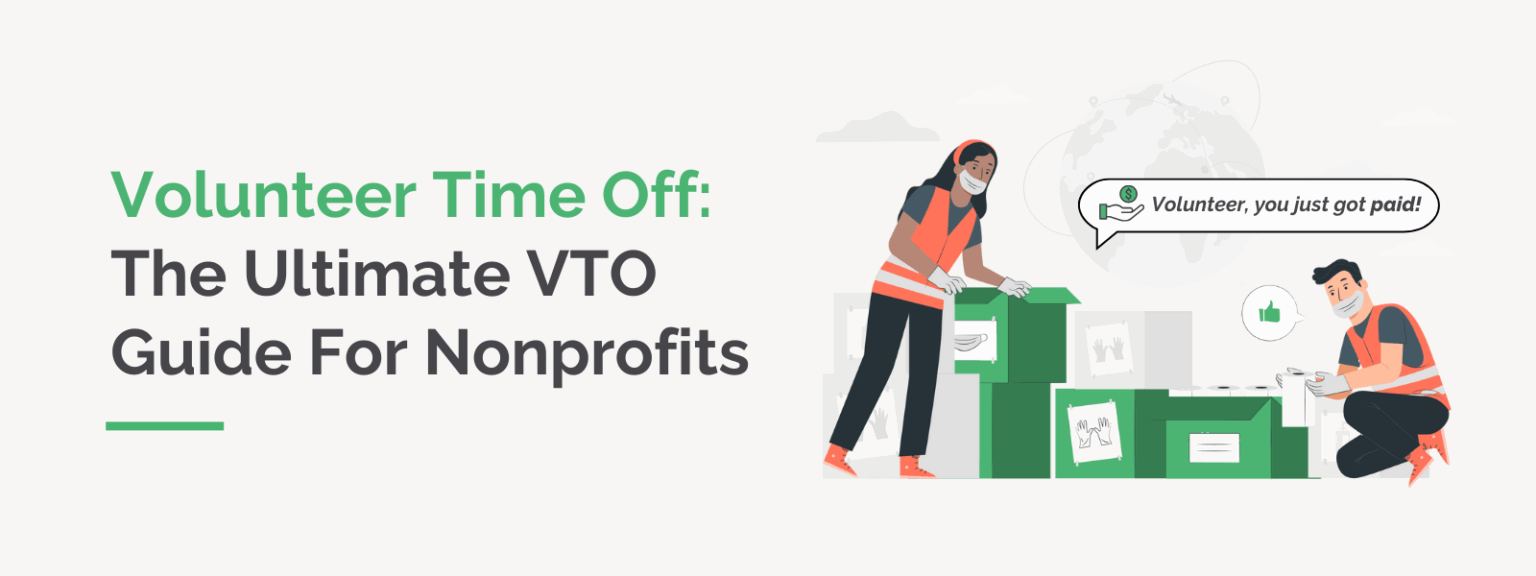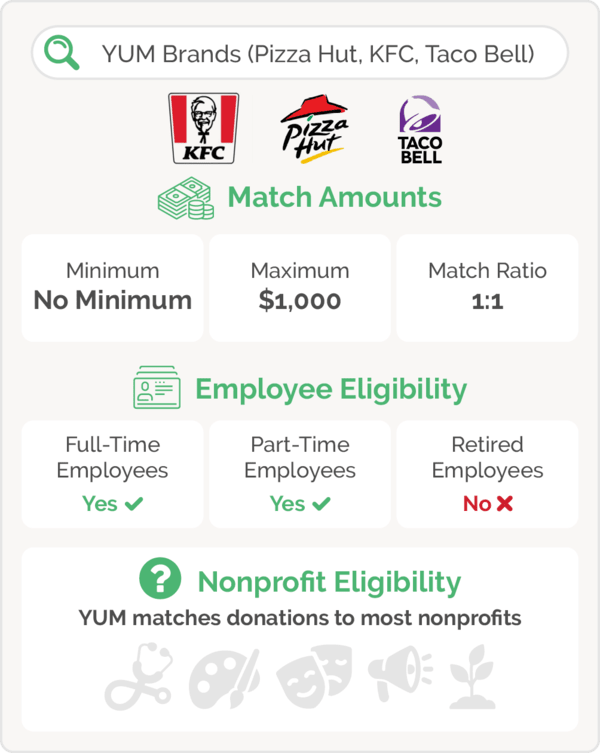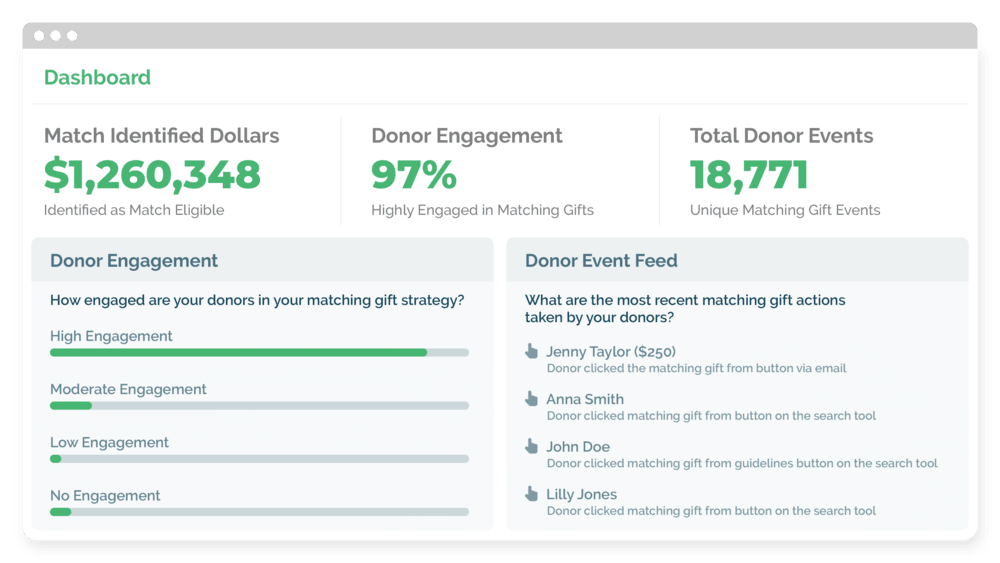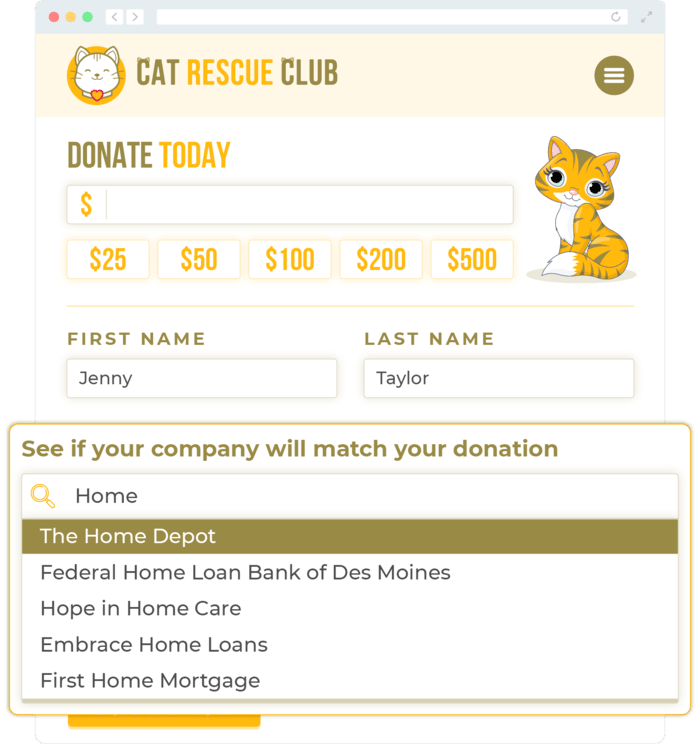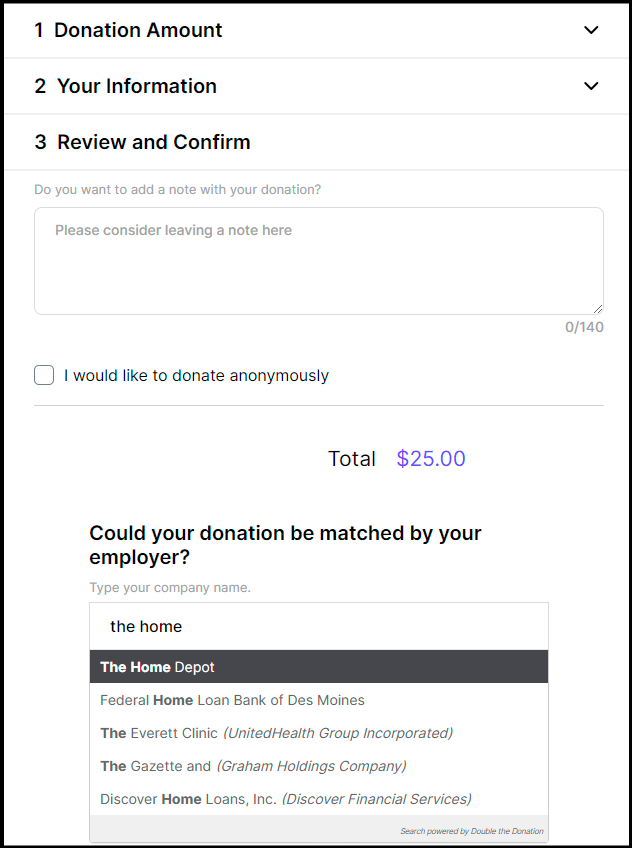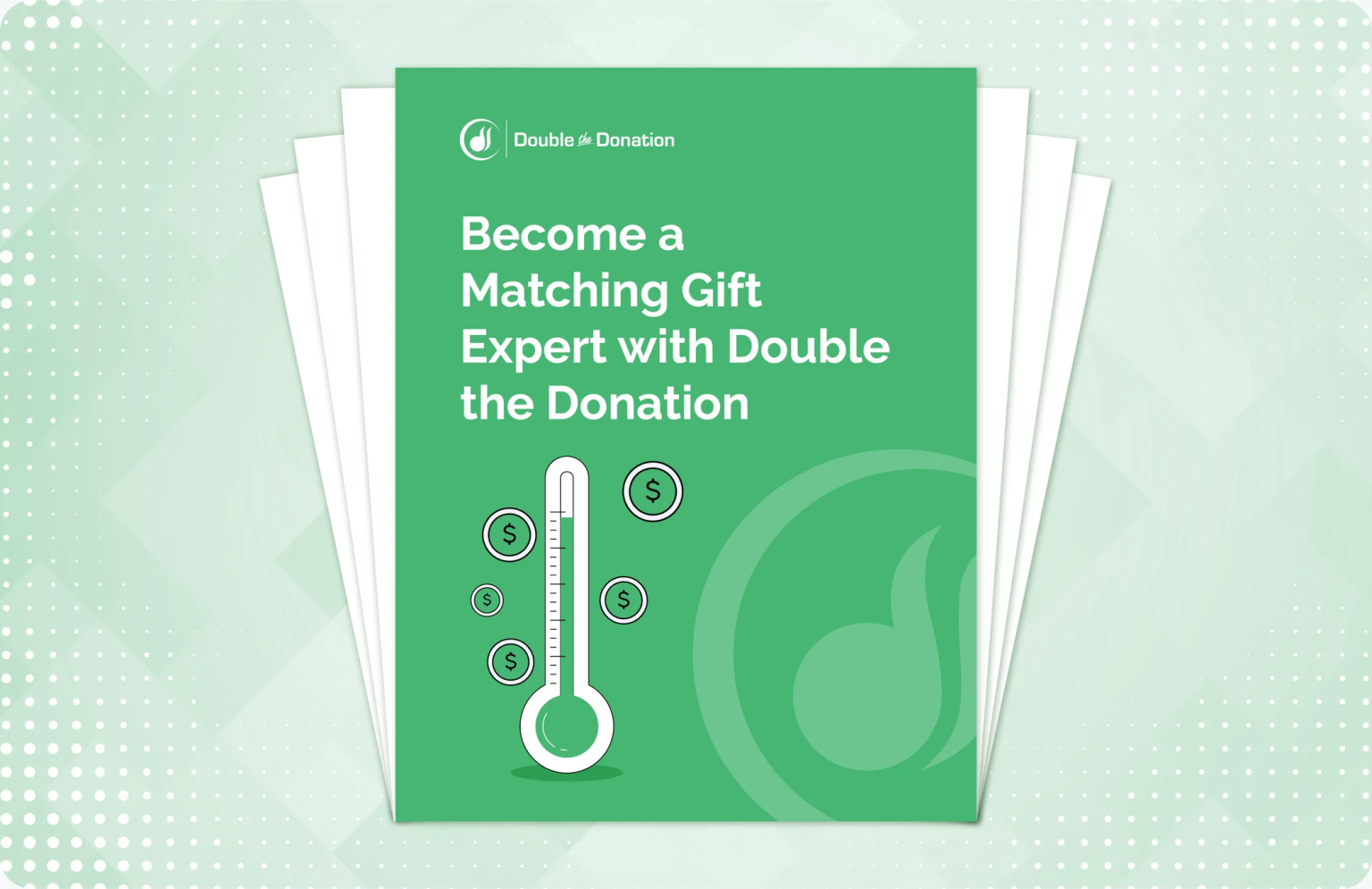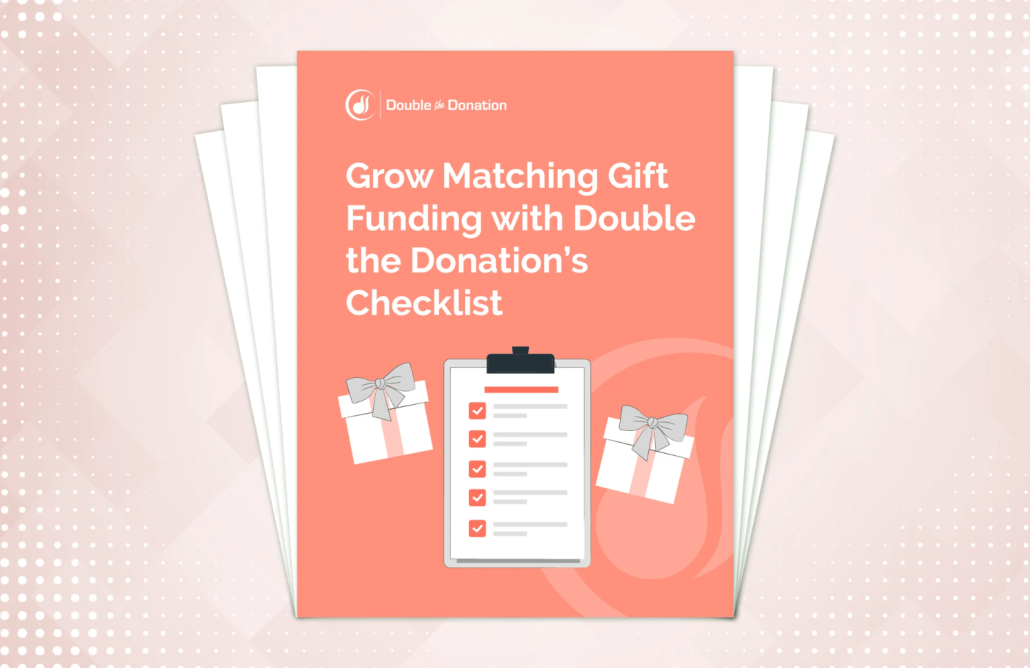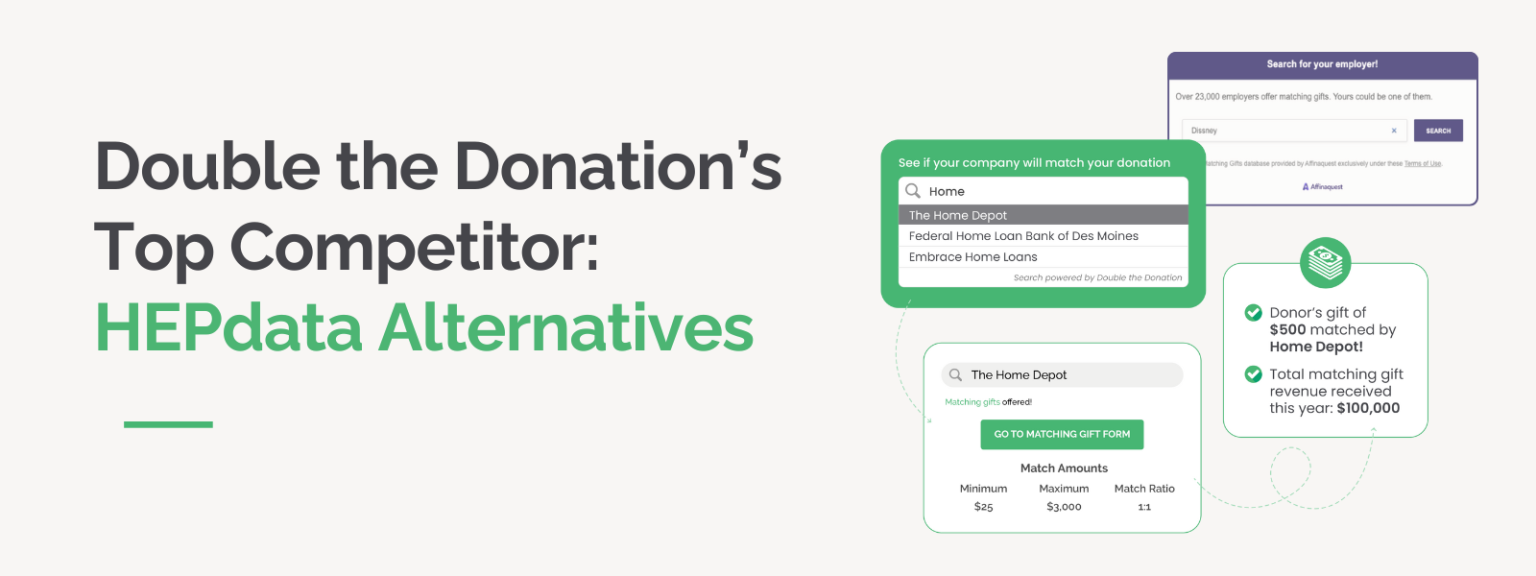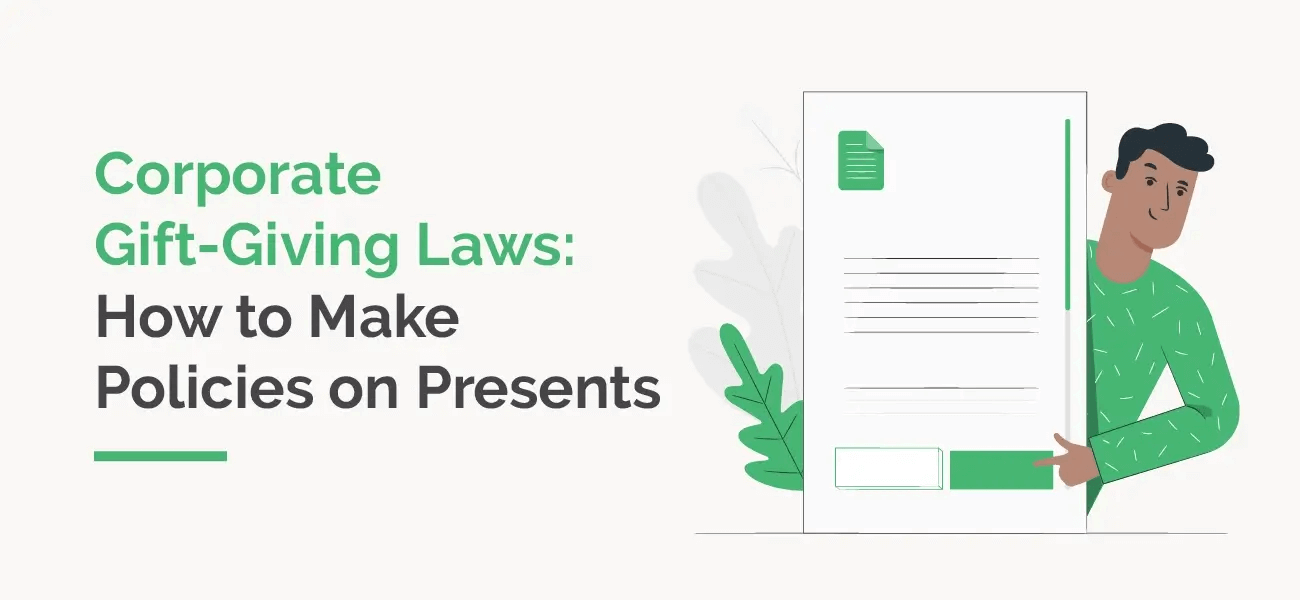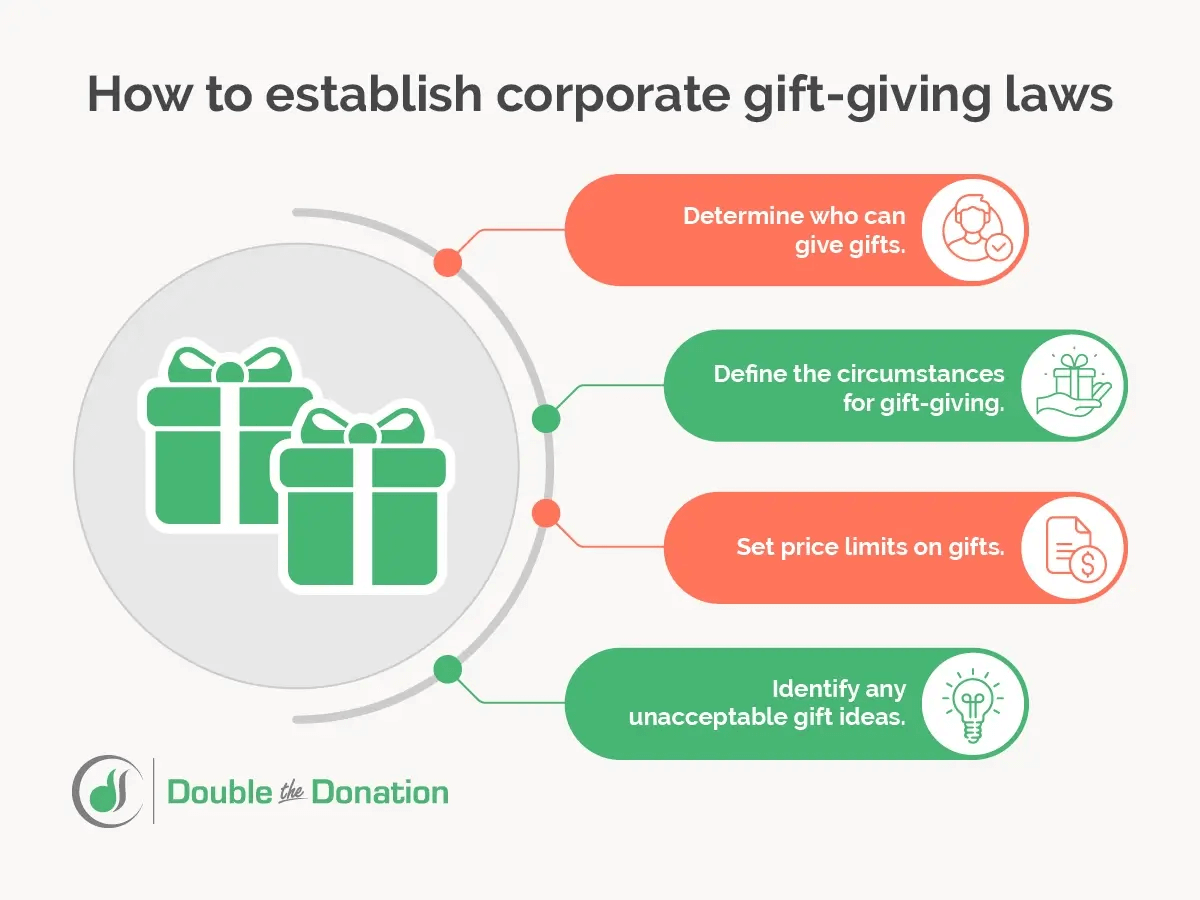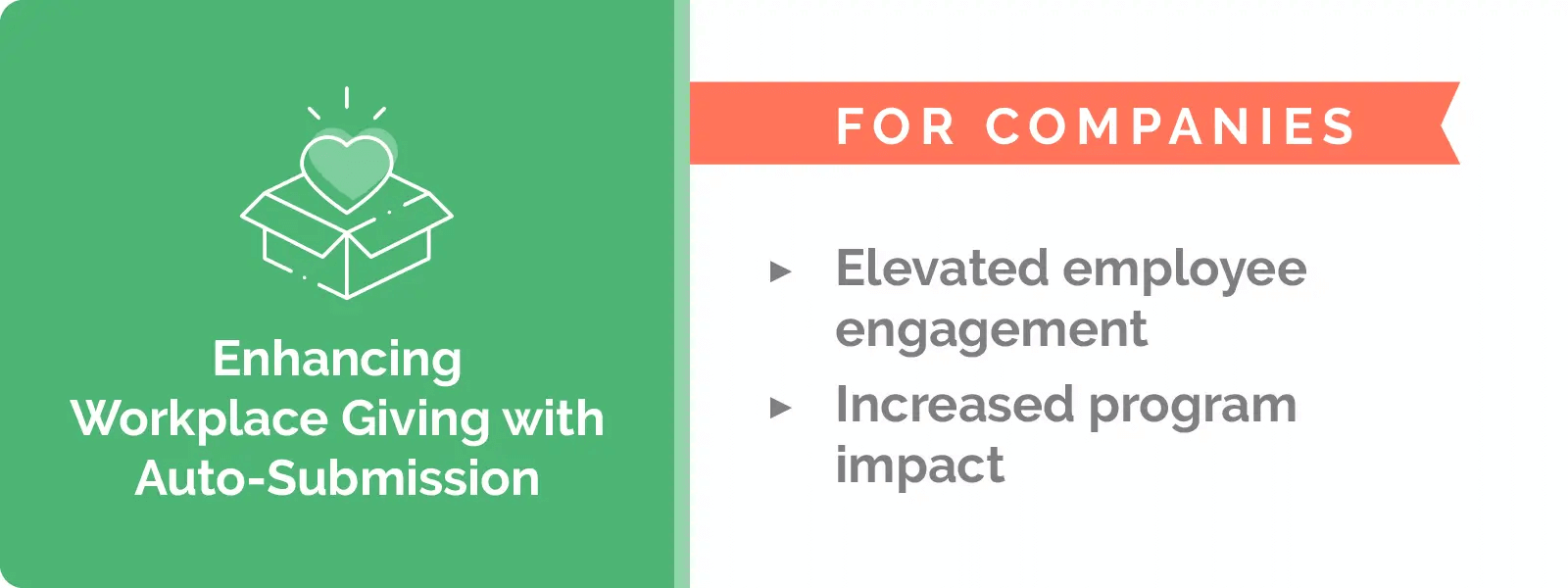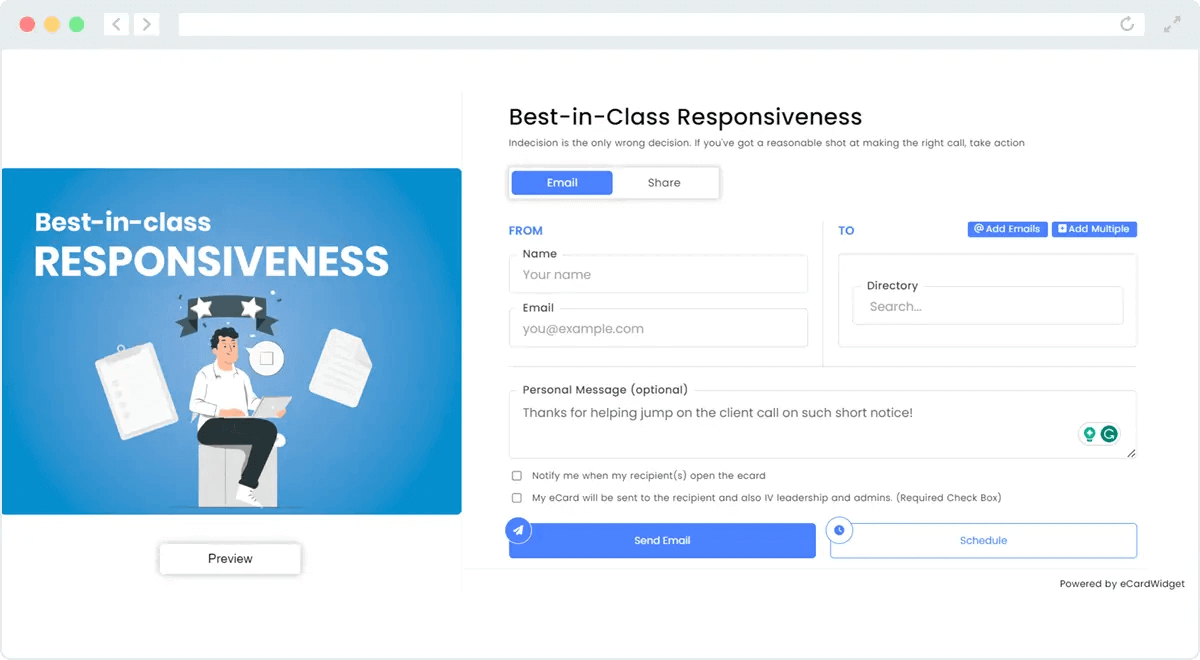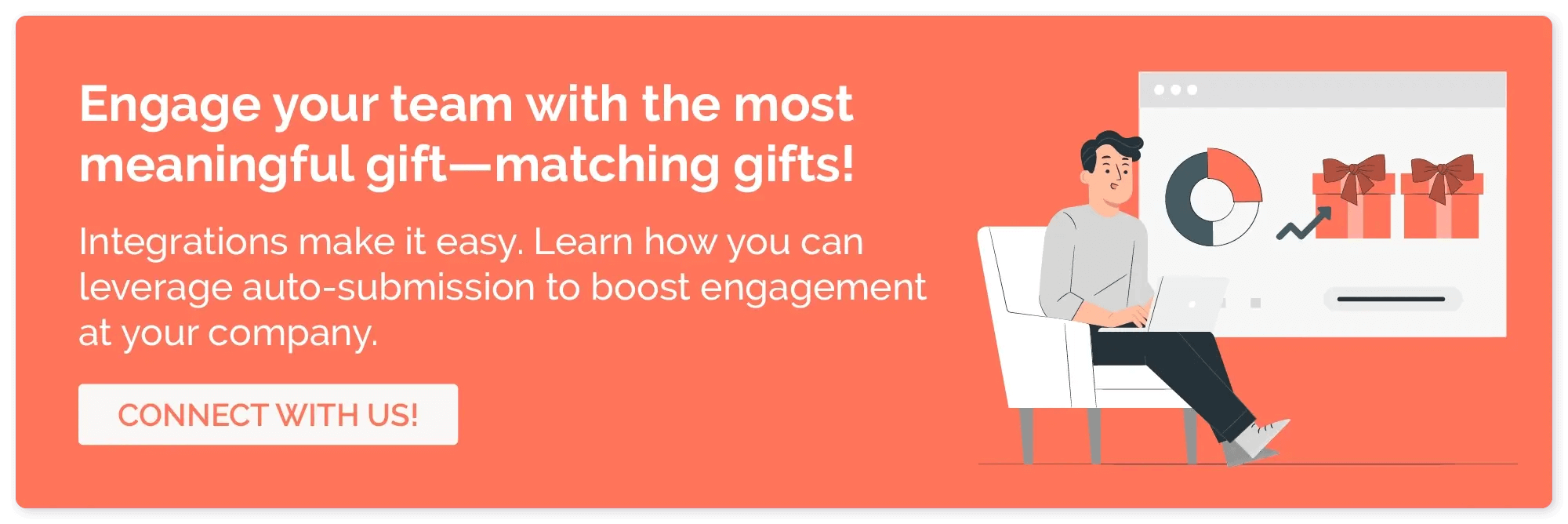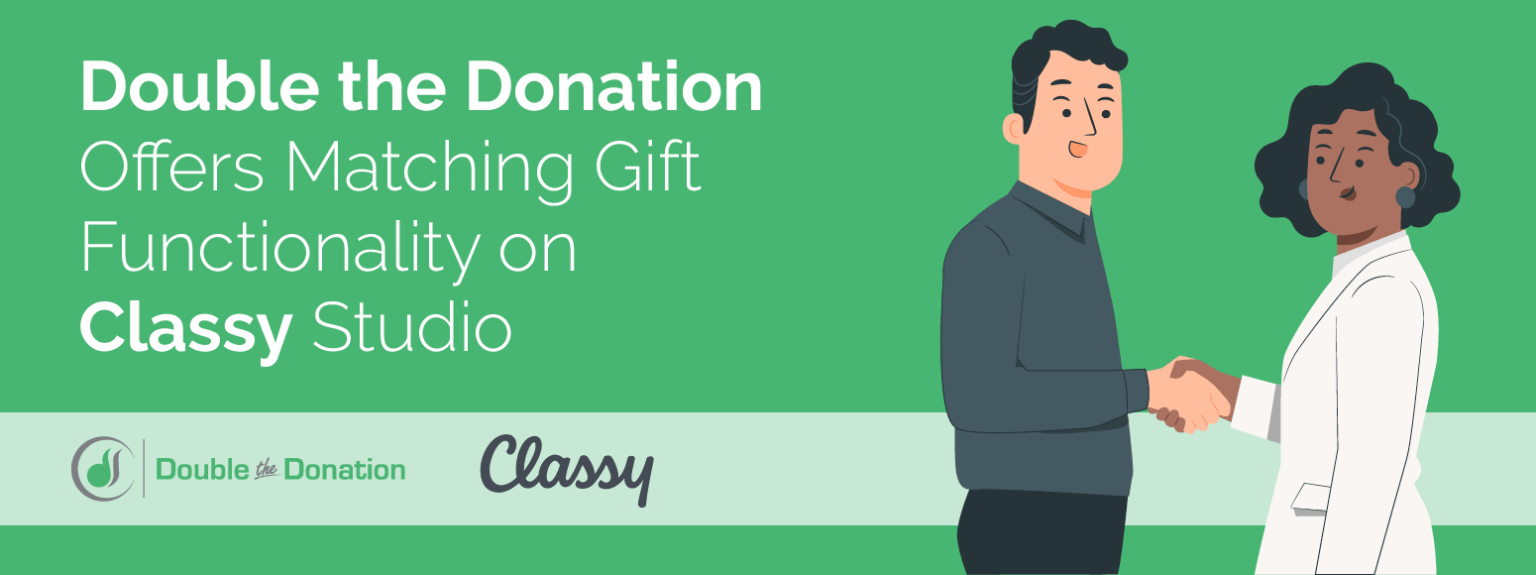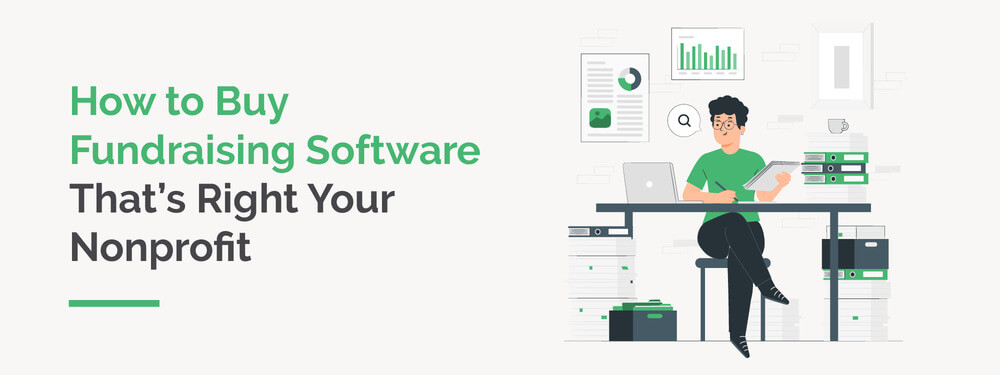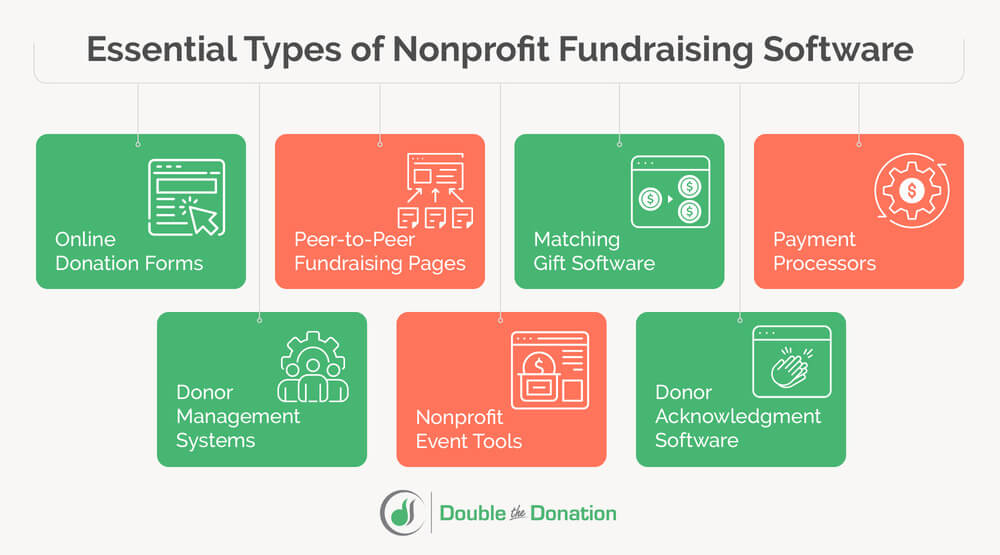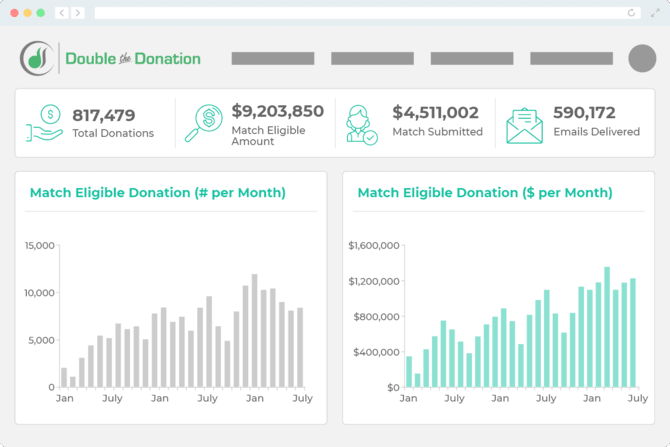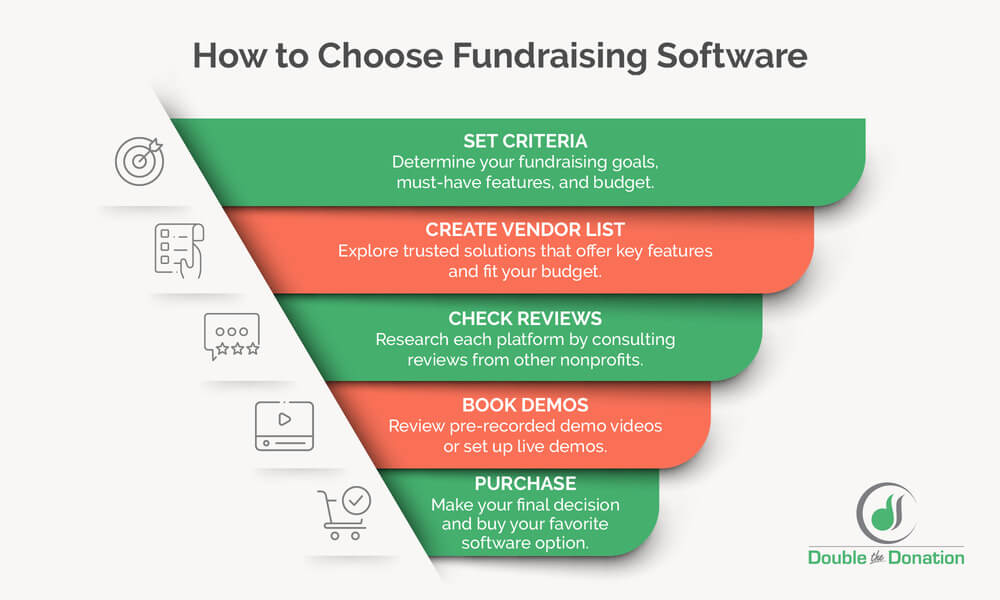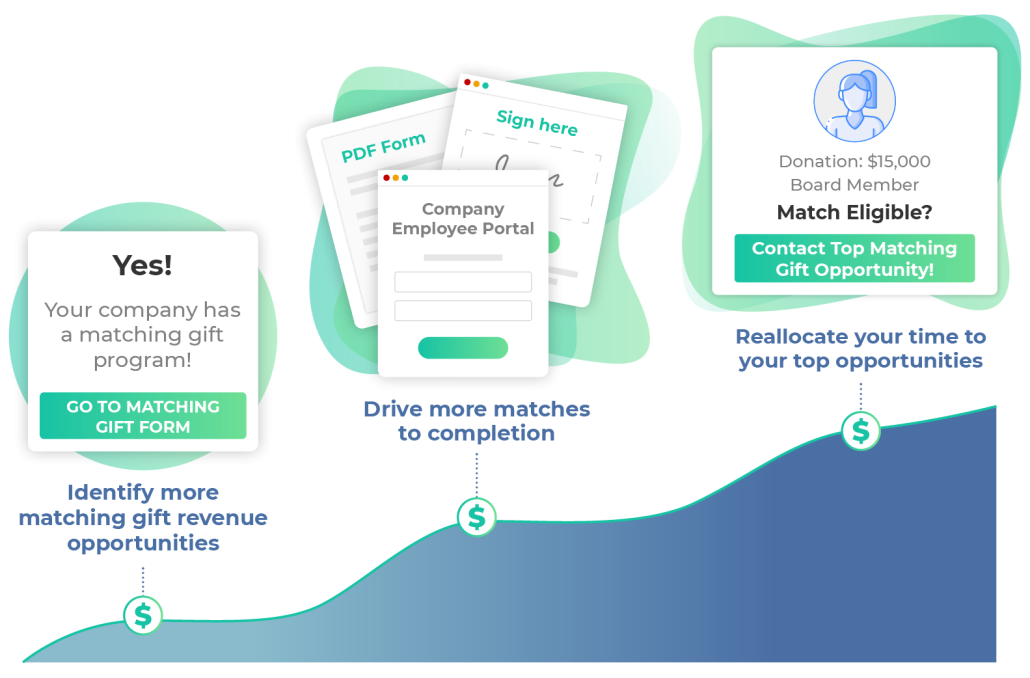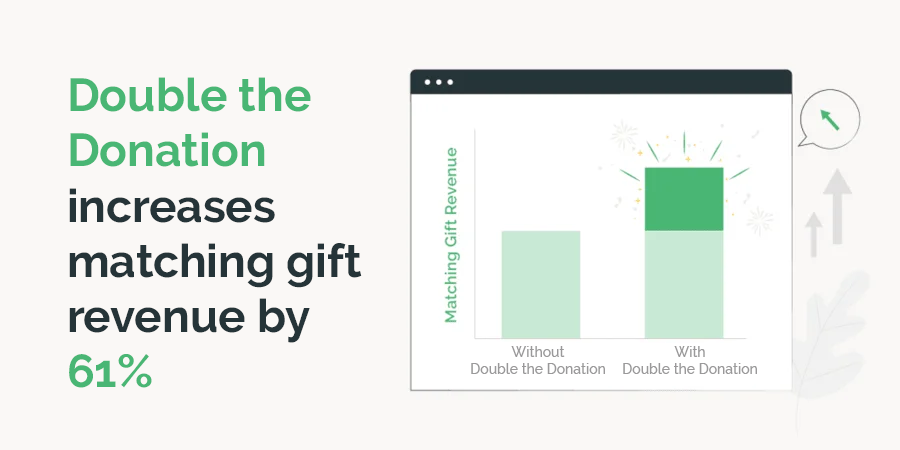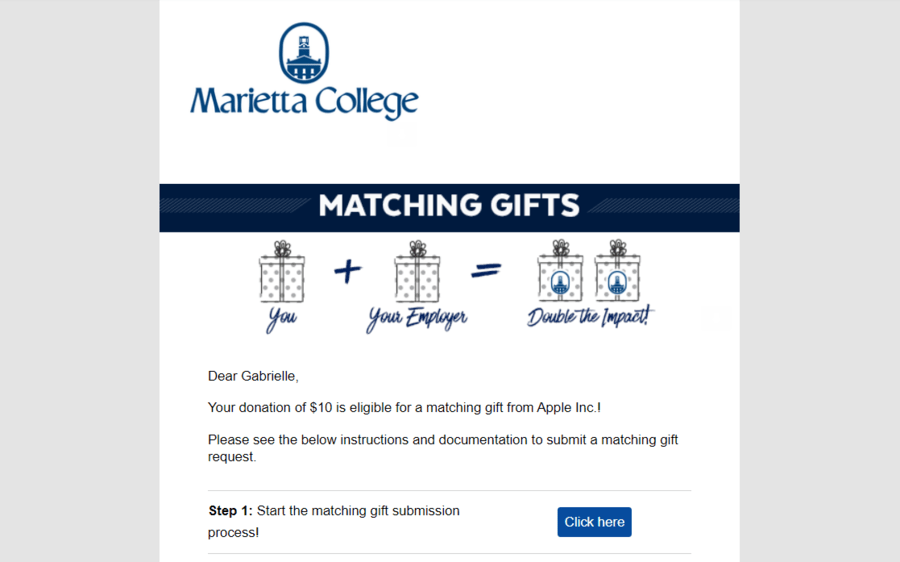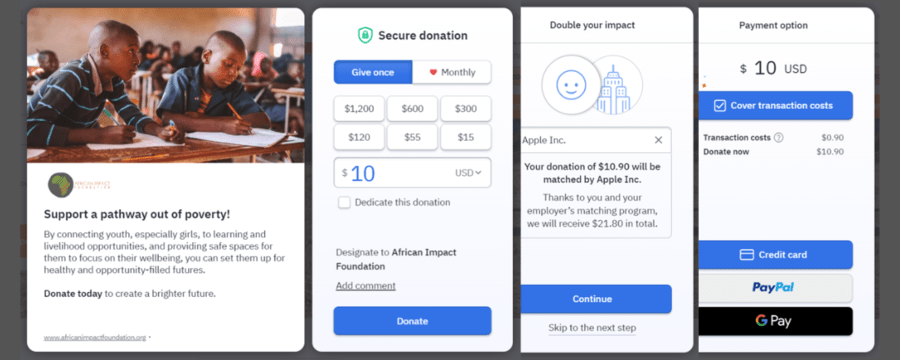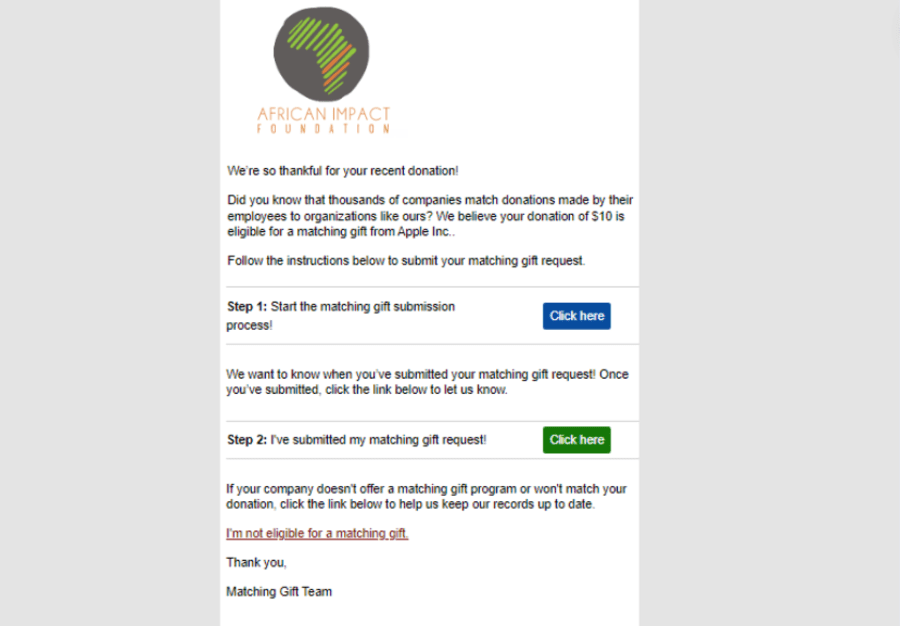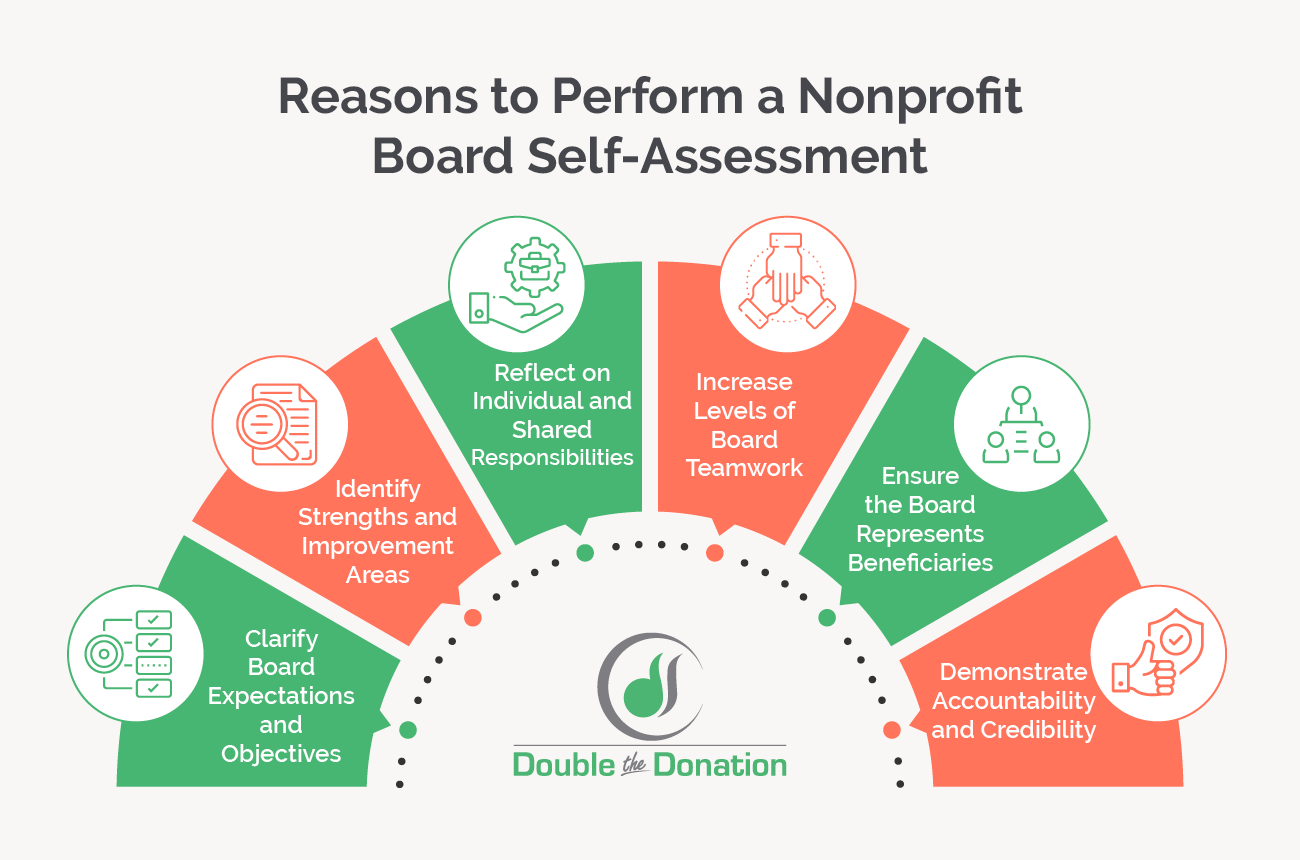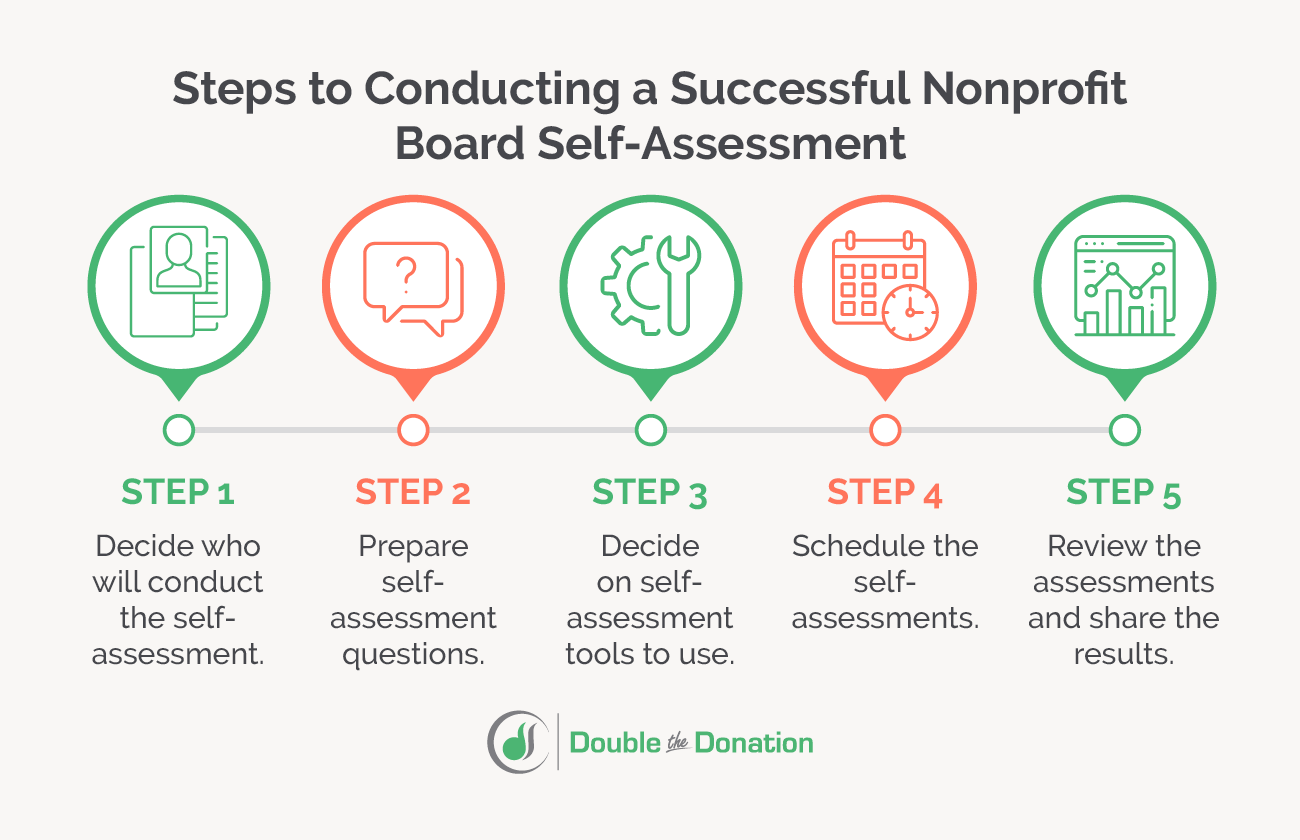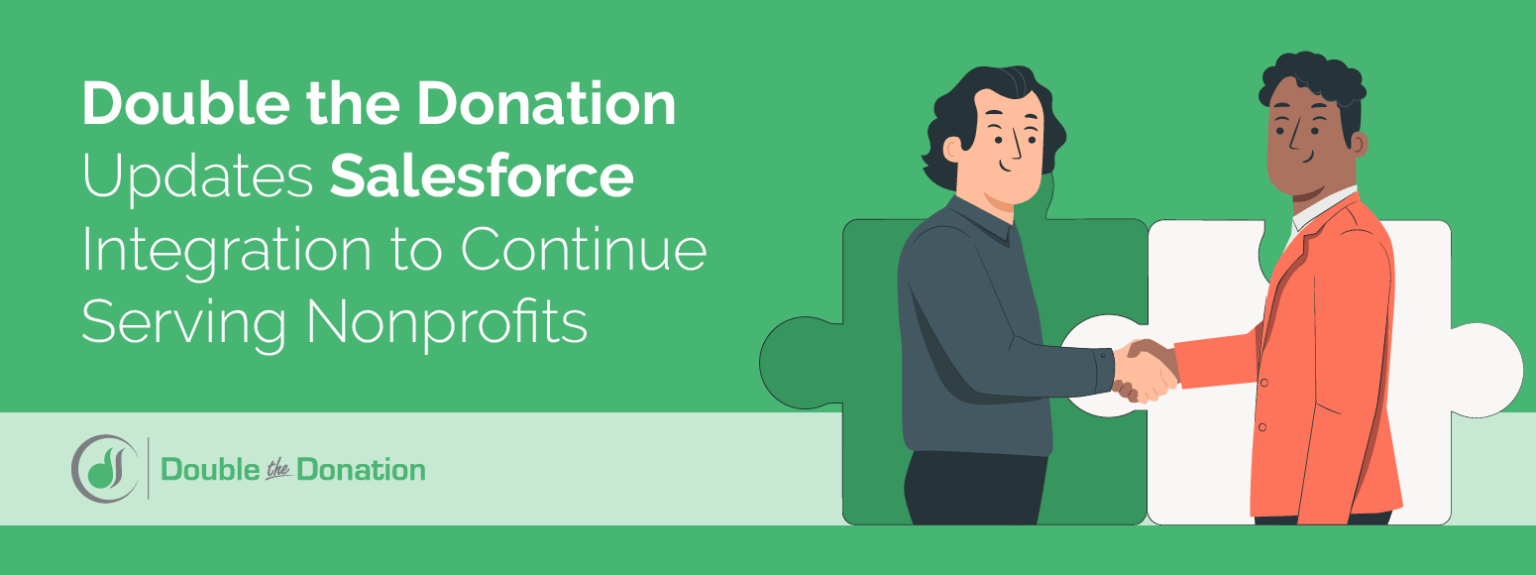How A Corporate Giving Database Unlocks Fundraising Success
/in Learning Center, About Double the Donation /by Adam WeingerCompanies gave an impressive $29.48 billion to U.S. charities in 2022. Even with this generosity, nonprofits frequently overlook revenue opportunities. In fact, $4-$7 billion in funds allocated for matching gifts go unclaimed every year. That’s where a corporate giving database comes in.
This technology makes it easy for nonprofits to identify companies that offer CSR opportunities, such as workplace giving programs, sponsorships, and in-kind gifts. With a comprehensive and accurate database, nonprofits can access detailed information about corporate giving programs, including eligibility criteria, application processes, and deadlines.
This article will cover these topics and share how nonprofits can utilize corporate giving databases to discover companies willing to donate:
- What Is A Corporate Giving Database?
- CSR Databases: Understanding The Business Perspective
- Double the Donation’s Corporate Giving Database For Nonprofits
- How Nonprofits Can Leverage Our Corporate Giving Database
These databases aren’t just information repositories; they’re gateways to increased donations through generous companies. Let’s explore how to harness this technology to unlock greater fundraising success at your nonprofit.
What Is A Corporate Giving Database?
A corporate giving database is a comprehensive resource that compiles information on corporate philanthropy programs. This technology helps nonprofits identify potential funding opportunities by providing details on individual companies’ program criteria, application processes, and contact information.
Some databases offer geographic search functions, while others require you to search for specific companies by name. A database will typically store information on different types of giving opportunities such as:
- Matching Gifts: In this program, companies match donations their employees make to eligible nonprofits, effectively doubling the initial donation amount.
- Volunteer Grants: Corporations provide monetary grants to nonprofits where their employees volunteer usually based on the number of hours volunteered.
- Volunteer Time Off: This type of program provides employees with dedicated PTO hours they can spend volunteering with nonprofit causes.
- In-Kind Donations: Instead of cash, businesses donate goods or services, such as products, professional services, or other resources that the nonprofit might need.
- Cause Marketing: Also called cause-related marketing, cause marketing is when companies collaborate with nonprofits to launch campaigns where a portion of the revenue from certain products or services is donated to the nonprofit.
- Community Grants: Corporations provide grants for specific projects or programs that align with their CSR objectives, often focusing on local community enhancement.
Double the Donation’s matching gift database stores information on companies’ matching gift and volunteer grant programs. Fundraisers, donors, and volunteers can use the database to search for their employers and discover employee eligibility requirements, which nonprofits are eligible for matching grants, grant amounts, and match ratios. It’ll even provide instructions on submitting a match request and a link to the form, if available.
For example, here are the guidelines our database has for YUM Brands, which owns KFC, Pizza Hut, and Taco Bell:
Corporate giving databases are ideal for nonprofits looking for support and journalists reporting on CSR contributions.
CSR Databases: Understanding The Business Perspective
Companies that give to charity receive a reputation boost, tax write-offs, and increased employee engagement. As such, many corporations like to publicize their CSR efforts by creating dedicated web pages. They’ll also reach out to corporate giving database providers to be added to their systems, making it easy for nonprofits and employees to research donation opportunities and find eligibility requirements.
Reasons that companies share their CSR policies include:
- Enhanced brand reputation: Our CSR research indicates that consumers are 4-6x more likely to trust, protect, champion, and purchase from companies with a strong sense of purpose. Meanwhile, 93% of employees prefer working for companies that lead with purpose. That means companies with CSR initiatives are more likely to win over employees and consumers.
- Higher employee participation in CSR: Promoting their workplace giving programs means more employee participation! For example, let’s say someone donates to your nonprofit. If their employer shares their information with a corporate giving database provider, donors can research their eligibility and determine if they’re match-eligible right from your donation page.
- Community goodwill: Some companies show off their support for specific causes that align with their companies’ services. Our list of corporate philanthropy examples highlights how Bombas, a popular clothing retailer, donates socks, t-shirts, or underwear for every item purchased. They’ve donated 100 million items to 3,500+ shelters, transitional living facilities, and other community organizations.
Some companies manage corporate giving by launching a separately administered private foundation, for which the IRS requires public disclosure. Companies typically share impact metrics, funding opportunities, and how to apply for funding on their websites.
However, businesses commonly donate through corporate giving programs. Since companies aren’t required to publicize these programs, you might have trouble finding which businesses offer them. A corporate giving database like ours can help here! Our team constantly updates its database with the latest information on companies’ CSR programs. With records on more than 24,000 companies, our matching gift database is the most comprehensive, accurate one in the world.
Why Some Companies Cautiously Share Their CSR Programs
While there are several benefits to marketing CSR programs, some companies choose to limit their publicization. Here’s why some companies choose to limit the visibility of their philanthropic activities:
- Concerns over too many donation requests
- Privacy considerations for recipients or sensitive projects
- Angering customers who think the company is wasting money on an organization or cause they don’t approve of
Instead of publishing relevant CSR information on their website, businesses may quietly add their information to a corporate giving database to ensure key information is available to only those who need it, such as nonprofits and employees.
Double the Donation’s Corporate Giving Database For Nonprofits
Our corporate giving database is specifically designed to help nonprofits increase fundraising through corporate philanthropy. It’s the world’s most comprehensive matching gift database, representing 26.8 million matching gift-eligible individuals at 24,000+ companies. That’s an incredible 99.68% of all match-eligible donors!
With it, your nonprofit can:
- Identify and pursue match-eligible gifts and volunteer grants
- Uncover in-kind giving opportunities, corporate grants, sponsorships, and more
- Incorporate matching gifts into existing software via 100+ integrations, including leading providers like Blackbaud and Classy
- Simplify the matching gift and volunteer grant experience for supporters
- Save time with automated email streams that encourage supporters to submit requests to their employers
- Track and report on matching gifts with ease
- Uncover volunteer time off opportunities offered by generous employers in your network
Our team also constantly searches for and resolves stumbling blocks like broken links, outdated forms, and loading issues. That way, donors and volunteers won’t waste time completing an application just to find out they’re not eligible.
How Our Corporate Giving Database Works
Nonprofits can easily make using our database a part of their existing donation and volunteer management processes. Here’s how it works:
- Embed our company search tool into key areas on your website like your donation form and confirmation page.
- Supporters look up their employers. They can search for subsidiaries, brand names, and local offices. Even if they misspell the company’s name, our database can help them find the right one.
- Supporters view the company’s guidelines. For matching gifts, this includes minimum and maximum donation amounts, match ratios, employee eligibility requirements, nonprofit eligibility requirements, and request deadlines.
- If available, supporters click the link to the match request form or follow other submission guidelines. Currently, we have over 90% of forms available in our CSR database.
Watch this virtual tour of our platform, so you can envision how it’ll work for your team:
As the leader in matching gift technology, we’re constantly developing powerful new features to drive nonprofits’ success forward. For instance, our latest innovation is matching gift auto-submission, which gives donors the option to let our technology submit their match requests for them. That means less work for them, fewer errors on their forms, and more revenue for your nonprofit!
With Double the Donation, you can rest assured that you’re making the most of corporate matching gifts.
How Nonprofits Can Leverage Our Corporate Giving Database
Nonprofits of all shapes and sizes should learn how to leverage a corporate giving database. These databases can help your nonprofit identify and connect with companies whose giving criteria match your mission, helping to pinpoint long-term partnerships.
If investing in a corporate giving database sounds like a smart move, here’s how you can make the most of Double the Donation:
- Educate your team. Ensure your team knows how to use your corporate giving database. Nonprofits who use our database can explore our support articles, learn all about corporate giving through our Matching Gift Academy, and connect with our highly-responsive team if they need help.
- Embed the company search tool into key places. Add our company search tool to your online donation form and confirmation page to enable donors to check if their employer offers matching gifts when donating. Some nonprofits create a dedicated corporate giving page that features CSR opportunities and the search tool.
- Track and report on CSR results. Our platform maintains detailed records of your supporters’ corporate giving to analyze your strategies’ success. Pay special attention to companies that give substantially to your organization. Then, follow up to emphasize their impact and thank them for their support. This can lead to ongoing support through long-term partnerships and sponsored events.
By following these strategies, your nonprofit can boost its fundraising efforts with our corporate giving database. In no time, you’ll raise more funds and build stronger relationships with donors and corporate partners.
Final Thoughts on Corporate Giving Databases
Corporate giving databases offer a vital resource for nonprofits seeking to maximize their fundraising efforts and enhance their impact. By leveraging companies’ generosity, your nonprofit can expand its capacity to serve, innovate, and thrive.
To learn more about unlocking growth via corporate giving, explore these educational resources:
- The Ultimate Fundraising Guide to Corporate Giving Programs: Dive into the world of corporate philanthropy with this guide for nonprofits. Learn about types of corporate giving, including everything from sponsorships to automatic payroll deductions.
- Top 20+ Matching Gift Companies: Leaders in Corporate Giving: Explore leading companies we pulled from our matching gift database that give back to nonprofits.
- Matching Gift Databases: What Nonprofits Should Know: Matching gift databases are a particular type of corporate giving database. Learn the fundamentals of these platforms and how using one can impact your fundraising.
Handbid and Double the Donation Partner with Integrated Matching Gifts Solution
/in About Double the Donation /by Adam WeingerHandbid and Double the Donation are proud to announce a new integration and partnership to benefit nonprofits and their donors through employer matching gifts. The integration places Double the Donation tools on Handbid donation forms for donors to discover their eligibility for matching gifts from their employer.
“We know from our experience with mobile bidding and auctions that donors love when they can give in unique, scalable ways,” said Jeff Porter, Founder of Handbid. “We consider corporate matching gifts to be one of those key ways donors can deepen their impact again and again.”
An estimated $4-7 billion in matching gift funds goes unclaimed every year. These are funds specifically set aside for nonprofit organizations–and the goal of the Double the Donation and Handbid integration is to help organizations start reaping the benefits of corporate philanthropy programs.
“Every day donors make gifts to the organizations they care about but don’t realize they can make an even bigger difference thanks to their employer,” said Adam Weinger, President at Double the Donation. “Automation through Double the Donation and Handbid guides those donors to the programs that can literally double their donations.”
Handbid and Double the Donation’s new integration with Double the Donation can now be accessed by mutual clients of the solutions. Follow our integration guide for more details on how to get connected.
Ready to add matching gifts to your Handbid donation experience? Request a demo with us and make sure to share you’re a Handbid user!
Want additional resources to help you take your matching gifts strategy to the next level? Enroll today in our Matching Gift Academy for in-depth content about growing your matching gift revenue.
[Free Download] The Ultimate Guide to Matching Gifts
/in Learning Center, About Double the Donation /by Adam WeingerWhat is the Ultimate Guide to Matching Gifts?
Double the Donation’s Ultimate Guide to Matching Gifts is designed to be your go-to resource for understanding, leveraging, and maximizing corporate matching gift opportunities for your organization. Matching gifts, often overlooked, supply an incredible source of funding for nonprofits—offered by companies to financially reward the causes their employees care about. However, many teams aren’t fully aware of how these programs work or how to tap into them effectively.
In this guide, you’ll find everything you need to know about matching gifts, from understanding the basics and eligibility requirements to actionable tips on how to increase participation and track results. We provide examples of companies offering generous matching gift programs, best practices for educating and engaging donors, and strategies for fostering relationships with corporate partners.
Whether you’re new to the concept of matching gifts or looking to refine your existing approach, this resource offers detailed insights to help you unlock additional funding and deepen your engagement with both individual and corporate supporters.
Why download the Ultimate Guide to Matching Gifts?
Maximize fundraising potential.
Access actionable strategies to significantly boost donation revenue by leveraging corporate matching gift programs. By understanding how to tap into this often underutilized resource, nonprofits can unlock additional funding.
Streamline matching gift processes.
Uncover clear steps for optimizing the management of matching gifts, from identifying eligible donors to simplifying the follow-up process. This helps organizations save time and effort while ensuring they don’t miss out on match-eligible contributions.
Enhance donor engagement.
Donors are more likely to give if they know about matching gifts. Unleash best practices for educating and motivating donors to participate in matching gift programs, strengthening donor relationships and increasing engagement with your cause.
Additional Recommended Resources
Double the Donation’s Top Competitor | HEPdata Alternatives
/in About Double the Donation /by Adam WeingerCorporate Gift-Giving Laws: How to Make Policies on Presents
/in About Double the Donation /by Adam WeingerCorporate leaders oversee relationship management on many fronts, including employee engagement and customer satisfaction, and corporate gift-giving is an effective strategy to tackle it. After all, 57% of employees and 52% of consumers are more likely to be loyal to companies that provide gifts.
However, companies must give gifts fairly and responsibly for them to have the desired effect—and that’s where corporate gift-giving laws come in. In this guide, we’ll cover everything you need to know about these policies on presents, including:
- Corporate Gift-Giving Laws FAQS
- How to Create Corporate Gift-Giving Laws
- Corporate Gift-Giving Policy Template
- Corporate Gift Ideas
Let’s begin by taking a closer look at gift-giving basics!
Corporate Gift-Giving Laws FAQS
What are corporate gift-giving laws?
Corporate gift-giving laws are policies created by a company to standardize internal and external gift-giving, helping prevent bribery, favoritism, and other conflicts of interest. These policies generally outline the circumstances in which the company’s employees can give or receive gifts, including:
- Who can give and receive gifts? Corporate gift-giving laws outline gift exchanges between peers, superiors, and clients.
- What gifts are appropriate? Policies concerning corporate gift-giving may define the types of gifts that can be given or received, such as specific tangible items or monetary gifts.
- When should gifts be given? Corporate gift-giving laws should specify how often gifts can be given to monitor the amount of gifts that are sent or received.
- How much can be spent on gifts? A well-planned policy outlines the budget for gift-giving, determining how much can be spent on a gift.
With a policy that lays out these details, your company will be equipped to start exchanging gifts with clients, employees, business partners, and other contacts to strengthen relationships with your professional network. Let’s break this down further by examining the essentials of gift-giving and receiving.
What is an employee gift policy?
Giving employees gifts can have a significant impact on your company’s efforts to recognize, engage, and retain employees. Generosity can also increase productivity, with 81% of employees stating they are more likely to work harder when an employer appreciates their efforts.
This means your company should craft an employee gift policy that outlines how you’ll show appreciation through gifts and under what circumstances. This policy will depend on the following elements:
Tax implications of employee gifts
The IRS states businesses can deduct $25 of the gift value per recipient per tax year. For example, let’s say leadership gives each employee a $35 snack box. $25 of that cost would be tax-deductible for each gift.
To deduct these expenses, your company must have records that include the details of the amount spent and prove the business purpose of the gift. This also applies to gifts given indirectly to an employee, such as to a spouse or family member.
However, some types of gifts, such as gifts that can be considered entertainment, are not tax deductible. For example, if you were to gift clients bottles of wine and take them to an orchestra performance, the wine bottles would be tax deductible but the orchestra tickets would not.
Employee gift reporting
For the sake of accountability and to keep your books in order, determine how your company will report the gifts it gives. This will be an important part of your policy, which not only lays out the gift-giving process but also how you’ll report and track gifts.
Be sure to keep thorough records including:
- The value of the gift
- When the gift was given
- Who the recipient was
- The reason for the gift
Determine who will be in charge of recording employee gifts and where these records should live.
What are corporate gift acceptance policies?
Aside from giving gifts, your company may also receive gifts from clients, customers, or other corporations. To account for this, create a gift acceptance policy that determines which gifts are given and under what circumstances they’re acceptable on behalf of your company.
How to Create Corporate Gift-Giving Laws
So how do you get started, and what should you include? Create corporate gift-giving laws for your company using the following steps:
- Determine who can give gifts. Decide which members of your company’s leadership have the authority to purchase and give gifts. For example, should managers have the authority to give employee gifts, or should they recommend certain employees for rewards and leave the gift-giving to leadership?
- Define the circumstances for gift-giving. Write out the purpose of gift-giving and under which circumstances gifts are appropriate. For example, if your company seeks to give gifts as part of its employee recognition strategy, you might create a gift-giving timeline based on specific work-related accomplishments or anniversaries.
- Set price limits on gifts. Outline specific price limits in your gift policy. Consider setting price ranges for various gift types and occasions. For example, a work anniversary might warrant a $50 plaque while a retirement gift could be more expensive. Remember your gifts may vary based on availability or the purpose of the gift.
- Identify any unacceptable gift ideas. Provide flexibility for the types of gifts that can be given, but recognize that some gifts should never be given. For example, gifting a pair of jeans with no relevance or branding to your business could be inappropriate and unprofessional. Make a list of specific gift items that shouldn’t be given under any circumstances.
Make provisions for this policy to be adjusted in the future, if necessary. It’s difficult to include everything, and you may encounter a unique situation in the future that calls for you to revisit your policy. To visualize how you might put these key elements together in one, comprehensive policy, let’s go over a template!
Corporate Gift-Giving Policy Template
If you need help getting started, fill in this template with your company’s unique information:
[Company’s name] recognizes gifting as a customary practice and a meaningful way to show appreciation. To avoid perceptions of bribery, favoritism, and other conflicts of interest, this policy will outline the guidelines and acceptable norms for giving and receiving gifts.
-
- Definitions
“Gift” refers to cash, goods, or services of commercial value that are given to an individual for personal benefit without any expected return of payment. - Scope
This policy applies to [list roles that should follow this policy]. At [Company’s name], the following individuals are authorized to give or receive gifts on behalf of the company:
[List individuals allowed to give or receive gifts] - Unacceptable Gifts
The following gifts are unacceptable to be given or received on behalf of [Company’s name]:
Gifts of expensive electronic items, such as mobile phones, laptops, or TVs.
Personal gifts of clothing or jewelry are inappropriate and strictly prohibited.
[List any other unacceptable gifts] - Price Limits
[Company’s name] shall adhere to the following price ranges when giving gifts:
Employee recognition gifts should not exceed [Amount].
Work anniversary gifts for any employee should not exceed [Amount].
Gifts accepted from clients/customers should not exceed [Amount]. - Gift Receipts
After giving or receiving a gift, any employee at [Company’s name] should record the gift by [Process for recording gifts].
- Definitions
Consider also creating a gift refusal letter template that employees or leadership can use to appropriately represent your company in the event they must decline a gift.
Corporate Gift Ideas
Coming up with a list of acceptable gifts can help you further standardize the process of rewarding employees and stewarding customers. Consider the following gift ideas.
Matching gifts
While matched donations aren’t tangible or deliverable via a gift bag, they’re a great way to show employees that your company cares about the same causes they do. Incorporate a matching gift program into your company’s existing philanthropic efforts and add guidelines to your employee handbook or portal so your team knows how to participate.
To encourage employees to participate in your program, invest in CSR software with auto-submission capabilities. This will connect your company’s information and matching gift request form to matching gift databases, allowing employees to automatically submit a match request upon making a donation.
As a result, your company will see the following benefits:
- Elevated employee engagement: Employees will be more engaged when they know your company values them—and the causes they value. Automating matching gift requests demonstrates your company’s eagerness to give and support the causes your employees care about.
- Increased program impact: Auto-submission streamlines the management of your company’s corporate giving programs. Plus, you’ll make it easier for employees to give and ultimately increase your company’s social impact.
Add to the impact of your matching gift program by further building out your CSR initiatives. For example, you might launch a corporate volunteer program in which your team can volunteer for nonprofits together or a volunteer grant to donate monetarily in response to their individual volunteer hours.
eCards
Whether you’re celebrating an employee’s birthday, wishing a customer a happy holiday season, or thanking a team leader for their hard work, thank-you messages can be simple yet meaningful gifts.
eCard software allows you to create customizable, digital greeting cards for any occasion, meaning your company can develop an arsenal of greeting cards for birthdays, work anniversaries, celebrating accomplishments, or any other situation warranting a gift.
For example, let’s say you want to recognize an employee for going above and beyond in their urgency and responsiveness. Here’s how you could create an eCard to thank them:
- Design the eCard: Create a design for the eCard that calls out the purpose of the message. In this example, you could title the card, “Best-in-class responsiveness” to thank an employee for prompt communication.
- Add a personal message: Personalize the card with a message so the recipient knows exactly what they did to receive a card and why their actions mattered. For example, you might write, “Thanks for helping jump on the client call on such short notice!”
- Opt-in to notifications: eCard software can notify you when the recipient opens their eCard, allowing you to track how and when employees engage with your appreciation messages.
With these features, you’ll be able to send unique eCards to employees and clients alike. Plus, by making the tool available to your team, you’ll encourage your staff to send eCards to each other and recognize their peers.
Tangible gifts
While any tangible gifts you give will be unique to the occasion and the recipient, here are a few ideas to kickstart your shopping:
- Gift baskets
- Wellness boxes
- Personalized stationery
- Sample products from your business
Tangible gifts are tricky to navigate since they require a careful balance between being personally meaningful and professional. Be sure to outline any relevant requirements for choosing tangible gifts in your corporate gift-giving laws to provide clear guidelines for choosing these gifts.
Tribute gifts
Aside from matching employees’ donations, your business can also give on their behalf to the causes they care about! For example, if you know that an employee volunteers at a local animal shelter, consider donating to that shelter on their behalf as an appreciation gift.
Additional Resources for Creating Corporate Gift-Giving Laws
Corporate gift-giving laws are unique to the organization that creates them, which is why your policy should foremost address your organization’s needs. For example, smaller, close-knit teams might have more flexibility while larger companies will need strict guidelines to ensure gift-giving is fair.
Consider where your company aims to be in the future and leave room in your policies to adapt to these changes. For example, do you plan to double your staff? Will you serve a new client base? As you consider your company’s growth and the policies that you’ll need in place to account for it, look over the following resources for more tips:
- Top Corporate Giving Software to Drive Employee Engagement. As your corporate giving efforts grow, you’ll need a tech toolkit that supports your strategies. Check out our list of top platforms to drive employee engagement.
- 22 Employee Recognition Platforms To Recharge Your Workplace. Gifts are great for employee recognition, but there are additional tools you can use to reinvigorate your team! Browse this list of employee recognition platforms to find the right ones for your company.
- 8 Trends in Corporate Philanthropy for 2024: How to Tap In. The world of corporate philanthropy is always evolving. Check out the most recent trends in this guide.
Double the Donation Offers Matching Gift Functionality on Classy Studio
/in About Double the Donation /by Adam WeingerDouble the Donation and Classy continue strong partnership with expanded integration capabilities. Now, mutual clients can leverage Double the Donation on their Classy Studio giving experiences.
As Classy’s preferred matching gift solution, Double the Donation already integrates with Classy’s standard and embedded donation forms to help nonprofits uncover matching gift opportunities. With Classy’s new, innovative Studio forms, fundraisers can create unforgettable supporter experiences that integrate employer gift matching to maximize success.
“Classy Studio is our next-generation fundraising platform that revolutionizes the end-to-end campaign experience. From creation, to launch, to receiving donations, Studio makes launching beautiful, performant campaigns easy” said Robert King Novara, Senior Product Manager, and lead Product Manager for Studio. “Elevating Double the Donation’s employer gift matching option directly in the Classy Studio checkout flow provides a seamless donor experience. With Classy Studio and Double the Donation, nonprofits can create giving and gift-matching experiences that include every supporter in your mission.”
This integration further enhances the ability for nonprofits to maximize matching gift fundraising across their campaigns. Leveraging this functionality, match-eligible donors can now be identified across standard, embedded, or studio Classy donation forms. No matter how a donor gives, they will have the opportunity to double the generosity.
“At Double the Donation, we want to make it as simple as possible for nonprofits to uncover eligible donors and harness those matching gift dollars,” says Adam Weinger, President of Double the Donation. “This expansion of our integration ensures that matching gifts can be part of a nonprofit’s fundraising strategy to enhance success and expand mission impact.”
Accessing the Double the Donation integration across your Classy donation forms is simple. Follow our integration guide and get connected in minutes. Are you a Classy user ready to start your matching gift automation journey? Request a demo of Double the Donation, and let us know you use Classy for your fundraising efforts.
Want additional resources to help you take your matching gifts strategy to the next level? Enroll today in our Matching Gift Academy for in-depth content about growing your matching gift revenue.
About Classy: Classy is a giving platform that enables nonprofits to connect with the causes they care about. By providing solutions for online fundraising that create great experiences for supporters, Classy empowers nonprofits to unlock generosity and advance their missions. As part of the GoFundMe family, Classy is trusted by thousands of nonprofit partners and has helped organizations raise $30 billion for social good, Classy also hosts the Collaborative conference, a two-day immersive experience that unites the most inventive minds in the social sector to uncover the ideas and strategies necessary to propel our industry forward. For more information, visit www.classy.org or follow Classy on LinkedIn.
About Double the Donation: Automate your matching gift fundraising with the industry-leading solution from Double the Donation. The Double the Donation platform provides nonprofits with tools to identify match-eligible donors, drive matches to completion, and gain actionable insights. Double the Donation integrates directly into donation forms, CRMs, social fundraising software, and other nonprofit technology solutions to capture employment information and follow up appropriately with donors about matching gifts. To learn more visit https://doublethedonation.com/get-a-demo/
How to Buy Fundraising Software That’s Right For Your Nonprofit
/in Learning Center, About Double the Donation, Learning Center /by Adam WeingerDigital fundraising is crucial in today’s nonprofit landscape. In the current software-driven fundraising era, nonprofits, schools, and other charitable institutions must reassess their fundraising arsenals.
If this description sounds like your situation, you may be considering enhancing your existing toolkit or buying new fundraising software. To assist you in this journey, we’ve crafted a comprehensive guide for navigating this process. We’ll cover:
- Types of Fundraising Software to Know
- Factors to Consider When Buying Fundraising Software
- Questions to Ask Before Buying Fundraising Software
- Key Steps for Buying Fundraising Software
- Our Top Fundraising Tool Pick to Drive Engagement + Revenue
- Examples of Fundraising Software In Action
Improve your understanding of how fundraising software impacts organizations like yours and learn what to consider when searching for new tools. From matching gift tools to peer-to-peer platforms, we’ll cover everything you need to elevate your fundraising efforts.
Types of Fundraising Software to Know
A nonprofit fundraising toolkit includes multiple platforms that together perform all the functions you need to reach out to supporters and secure donations. Some solutions are “all-in-one” platforms, while others focus on a few specific features and can integrate with external add-ons to expand their functionality.
What platforms to include in your fundraising toolkit depends on your nonprofit’s needs and goals. However, a few types of fundraising software solutions can be considered essential.
Online Donation Forms
One of the core components of your fundraising toolkit is your organization’s online donation forms. These resources allow nonprofits to collect donations online.
The best donation pages empower users to:
- Offer suggested (or custom) donation amounts
- Accept gifts from desktop computers and mobile devices
- Match their donation form branding to their organization
- Facilitate one-time and recurring gifts
- Collect additional donor information through custom form fields
- Integrate with a variety of other nonprofit solutions, like Double the Donation’s matching gift software
Donation forms have one of the most straightforward purposes of all fundraising software, but there are still many providers to choose from. You may even choose one with more features than the ones we just listed.
Peer-to-Peer Fundraising Pages
Peer-to-peer fundraising campaigns elevate existing donors’ engagement while simultaneously expanding your reach to new prospects. Several peer-to-peer fundraising software options are available that enable organizations to:
- Equip volunteer fundraisers with customizable campaign pages
- Add images and other fundraising updates
- Spread the word with social sharing tools
- Track fundraising progress toward goals
- Prioritize an accessible and easy-to-use giving process
- Integrate with other nonprofit solutions
Remember, for peer-to-peer fundraising, your system should be easy for both your team and your donors to use.
Matching Gift Software
Tons of workplace giving revenue gets left on the table each year—including $4 to $7 billion in unclaimed matching gifts alone. Luckily, nonprofits can leverage a matching gift platform to ensure their donors are tapping into these overlooked resources.
This type of fundraising software enables nonprofits to:
- Market matching gift opportunities to donors and supporters
- Locate detailed information about matching gift programs
- Access insights on volunteer grants, volunteer time off, and other corporate incentives for volunteering
- Leverage an autocompleting search tool to identify employment information
- Trigger automated outreach to provide valuable matching gift program insights
- Ensure no matching gift opportunity falls through the cracks with timely follow-up cadences
- Integrate with other nonprofit solutions
When it comes to matching gift software, we have to recommend our state-of-the-art solution, Double the Donation Matching. What puts our matching gift database over the top is our partnerships with corporate giving software, enabling automatic submission of matching gift requests.
Payment Processors
To accept donations and other payments online, you’ll need payment processing software that facilitates transactions behind the scenes. This tool essentially mediates between the organization, the donor, and their financial institution.
An effective payment processor empowers nonprofit organizations to:
- Process contributions for multiple payment methods
- Offer a simple user interface
- Produce ready-built and custom reports
- Maintain high levels of payment security standards
- Integrate with other nonprofit solutions
This fundraising tool is essential for facilitating donations, so choose a secure one that strengthens your donation process. Note that a donation form differentiates in that it collects other donor information and may use various payment processors to complete transactions.
Donor Management Systems
When it comes to managing donors, there’s a lot for your team to keep track of. Ensure your fundraisers have the tools to improve operations through a robust donor data management system.
Also known as a CRM (or constituent relationship management tool), your donor database should allow your team to:
- Maintain detailed supporter records with engagement histories
- Add helpful notes within donor profiles
- Segment your supporter base for targeted communications
- Automate administrative tasks and donor outreach
- Easily generate robust reports
- Integrate with other nonprofit solutions
The best nonprofit CRMs simplify communication and strengthen relationships. By understanding your supporters better, you’ll be able to foster deeper connections with them.
Nonprofit Event Tools
Hosting a fundraising event is an effective way to bring in new supporters, boost donor engagement, and increase fundraising revenue. Nonprofit event software can streamline the entire experience including planning, hosting, and following up post-event.
Specifically, the best event fundraising tools make it easy to:
- Craft online event pages and/or microsites to promote upcoming opportunities
- Offer free or paid ticketing options
- Organize engaging in-person, virtual, and hybrid experiences
- Facilitate digital bidding at auction events
- Collect additional donations beyond ticket sales
- Integrate with other nonprofit solutions
Events are a fundamental part of donor engagement, so make sure you can bring your community together to support your cause with the right event software.
Donor Acknowledgment Software
Appreciating your donors is a critical component of nonprofit fundraising, especially if you’re looking to steward long-term relationships with them. Be sure you have some kind of donor recognition software in your fundraising toolkit.
While a regular email or thank-you letter can make do in a pinch, elevate your gratitude with unique and engaging acknowledgments—like eCards!
Your donor recognition software should empower your team to:
- Brand messages to your nonprofit, including fonts, images, and colors
Send acknowledgments in seconds
Leverage multiple digital communication channels, including email and SMS
Customize communications to cultivate personal donor connections - Track digital thank-you notes to determine when supporters interact with your outreach
Acknowledging generosity is crucial for retaining support, so think of appreciation software as a tool for investing in earning future donations.
Factors to Consider When Buying Fundraising Software
As you explore various software options, we recommend making detailed notes on the following components of each platform:
Functionality
Fundraising software is a broad term that encompasses many different types of platforms and features. That said, make sure you’re buying software that has the functionalities your organization needs.
At the same time, consider what you can live without. For example, if your organization has awesome event fundraising ideas but isn’t so big on advocacy, forgo tools with advocacy features in favor of ones that have excellent event planning capabilities. Or perhaps you’re looking for a new nonprofit CRM, and you already have a donation platform you love. In that case, look for exclusively database solutions that don’t offer a built-in online giving tool.
Donor Experience
Your donors will typically be the end user of your fundraising software. For example, they’re the ones who fill out your nonprofit’s online donation forms, participate in peer-to-peer campaigns, and interact with your matching gift database search tool.
Prioritize fundraising software that makes the donor experience quick, easy, and painless. If a process is too long or complicated, even your most dedicated supporters may abandon their gifts. Alternatively, a seamless giving experience will keep donors coming back to support your cause time and time again.
Backend Ease of Use
Organizations should choose tech solutions with a level of complexity that is manageable and suitable for their team. For example, if your nonprofit employs developers, a custom-coded solution might make sense. On the other hand, if no one on your team is particularly technical, you’ll likely want to prioritize an off-the-shelf fundraising platform for ease of use.
A solution that’s too technical—and ultimately inaccessible—will complicate operations and discourage staff members from using it altogether. Remember, it’s not just the software but what you do with it that matters.
Scalability
As your internal fundraising team grows, will your software enable enough authorized users? Ensure all staff members who need to use your fundraising platform can. Not only that but when it comes to CRMs in particular, confirm that your potential platform can hold all your donor data with room to spare.
If you anticipate major growth in the near future, prioritize buying a platform that has room for expansion. This will allow your new tools to scale alongside your organization without requiring a software platform switch too quickly.
When choosing fundraising software, consider that low-cost solutions may quickly become inadequate, leading to the need for future upgrades and data migration. That’s why it’s wise to make a forward-thinking decision from the start.
Integrations
Even the most comprehensive software solutions might not have all the features your organization needs. You may have to integrate additional programs or systems to assist your operations.
Here are a few common scenarios when you might need integrations:
- An organization might have niche needs, where they may prefer to add their own software solutions (e.g., a particular payment processor or email application) to complement their existing tools.
- The software company you’re buying from doesn’t offer tools to facilitate all of your operations (e.g., corporate matching gifts), requiring you to integrate specialized fundraising software.
If you find that you require software integration, communicate your needs to your potential new vendor. That way, they can help determine the compatibility between different systems. Perhaps there’s a native, ready-built integration, in which case, great! On the other hand, if it’s difficult to integrate two solutions, reconsider your priorities or consider working with a nonprofit technology consultant who can develop a custom integration.
Cost
It’s important to go into any major purchase with a budget in mind, and fundraising software is no exception. Before evaluating specific platforms, decide how much your organization can spend. Consider base price, startup costs, and any additional ongoing fees.
The base price is the vendor’s list price on the platform you want to buy and will be what most of your investment goes toward. It encompasses the core functions of the platform but usually excludes expansions or optional add-ons.
Be sure to ask exactly what is included in the base price to make sure you receive all the capabilities you need. If the base price doesn’t include any of your organization’s necessary features, consider how much the excluded features cost to add on.
From there, you might run into additional hidden costs such as:
- Staff training
- Maintenance fees
- Online donation processing fees
- Future updates or add-ons
Going into the buying process with a clear budget will naturally limit your options, making the selection process easier. It also, of course, ensures that you won’t be spending more than you can afford.
Customizability
When buying fundraising software, you’re likely looking for a solution that can complement your organization’s operations with its out-of-the-box features. Even so, many platforms are customizable and can be further tailored to fit your cause.
Customizability is a sliding scale, and what level of customizability your nonprofit needs likely depends on your size, resources, and goals. For instance, enterprise-size nonprofits often require fully customizable solutions that are essentially built from the ground up, while small nonprofits may see required customization as an unnecessary strain on their time and budget.
In your search, you may find that software customization can apply to many different features, including:
- Supporter profiles
- Donation and sign-up forms
- Email marketing templates
- Reporting and tracking tools
With customizable features, you can mold your software to fit your organization’s unique needs better. Your fundraising software will feel custom-made, more effectively driving impact toward your overall goals.
Training and Ongoing Support
When you first get started with a new fundraising platform, your team will need to go through training or an onboarding process to become proficient with the new tools. The level of instruction can vary drastically from vendor to vendor, making it an important consideration in your search.
Here are a few general questions for your fundraising software company in regard to team-wide training:
- How long is the training process?
- How is training administered (e.g., virtual, on-site, etc.)?
- What proficiency level does your training cater to?
- What are the associated costs?
From there, consider ongoing support availability as well. After all, if your nonprofit hires new team members after your initial onboarding session, they’ll need to be trained, too.
Compare software support options by making the following inquiries before you purchase:
- Do you offer IT support?
- How do I get in contact with support if there’s a problem?
- What’s your typical response time?
Remember, the better you and your team understand your software, the more functional it will be, so choose a provider that offers the support you need. With the right support level at your fingertips, your software will perform well for years.
Security
Chances are, your organization will use its fundraising software to collect, store, and manage supporters’ sensitive data. Thus, it’s critical to choose a secure platform that can protect this information.
When chatting with vendors, ask about the software’s flexibility in controlling user permissions, so you can select which users can access sensitive information.
When it comes to donor payment information, consider industry security standards in your search, such as the following protections:
- PCI compliance: The Payment Card Industry Data Security Standard (PCI DSS) is a set of requirements designed to ensure that credit card information is processed, stored, and transmitted securely. For fundraising software, it’s essential for protecting donor payment information.
- Encryption and Tokenization: Encryption converts data into a coded format to prevent unauthorized access. Tokenization replaces sensitive data with unique identification symbols that retain all the essential information without compromising its security. Both are used to protect sensitive data like credit card numbers.
- Password Security: Strong password security measures ensure access to fundraising software is guarded against unauthorized users. This includes requirements for complex passwords, regular password changes, and secure storage of passwords.
- Multi-Factor Authentication (MFA): MFA adds an extra layer of security by requiring two or more verification factors to access a resource, such as a database or online account. For instance, your fundraising system might require users to enter an emailed code after entering their login details. This significantly reduces the risk of unauthorized access.
Confirm that donors’ data will be kept safe and sound within your fundraising platform, a ensure that supporters feel comfortable entering their payment information in the first place!
Questions to Ask Before Buying Fundraising Software
To ensure you find software that perfectly aligns with your needs, here are some recommended questions for your selection process!
How difficult are the initial setup and data transfer?
Because you buying fundraising software, account for the initial software setup and data transfer from your previous solution. Your nonprofit data is the key to strengthening donor relationships and optimizing fundraising efforts, so it’s essential that it translates to your new platform without issue.
First, determine that it’s possible to transfer your data to the new system in its proper format. Then, consider how you’ll prepare your data for this process. If it turns out that transferring your data from one system to another requires a lot of time and labor on your part, consider whether the software offers other benefits that make it worth the effort.
Does it have the integrations my organization needs?
Integrations are essential for an effective fundraising software ecosystem. Unintegrated software can result in time-consuming manual data migration and data silos. With integrations, however, your technology can function as a cohesive unit, rather than a collection of disparate tools.
Therefore, one of the most important questions when buying fundraising software is “Does it offer the integrations my team—and technology ecosystem—needs?”
For example, Double the Donation integrates with 70+ of the industry’s largest nonprofit technology providers, including donation platforms, peer-to-peer software, CRMs, corporate giving solutions, and more. If you use (or plan to use) Double the Donation’s matching gift software, we strongly recommend exploring the giving tools with which we partner.
How do I maintain effective use of my software over time?
The buying process doesn’t just end the minute your software is set up and your staff knows how to use it. For your software to keep running at its highest capacity, consider how you’ll maintain it over time.
Before deciding, ask if the software has any built-in features to keep your data clean and up-to-date. This is one instance where automation can make a big difference. Automated features like deduplication can help maintain a clean and accurate database, ensuring your records never become messy and out of hand.
Second, ensure that your maintenance support includes installing updates, or if it doesn’t, that these updates are fairly easy to install yourself. By keeping your software up-to-date, you’ll get much more life out of it and ensure it stays secure.
Key Steps for Buying Fundraising Software
As you navigate the fundraising software buying process, keep these key steps in mind.
1. Determine your fundraising goals, must-have features, and budget.
Start by determining what you want to achieve with a new platform. Perhaps you want to:
- Boost matching gift revenue with software that identifies eligible donors, markets match opportunities, and streamlines the matching gift request process.
- Increase donation page conversions by leveraging fundraising software with a user-friendly interface, customizable calls-to-action, and a seamless donation process.
- Improve data flow from your donation form to your CRM by automating data entry and minimizing duplicate entries via deduplication.
Notice how each goal has correlating features that allow you to accomplish those objectives. Allocate your funds based on these goals, must-have features, and anticipated number of users.
The best advice we can give is not to overcomplicate the fundraising process when buying fundraising software. Your new software should make your organization’s current operations better. If your new solution overcomplicates things for your team and donors with unnecessary features, it’s probably not the one.
2. Create a list of potential vendors.
With so many fundraising software solutions available, it can be difficult to narrow down your options. To kickstart your research with trusted providers, we recommend heading over to Double the Donation’s partnerships hub to check out the range of innovative, best-in-class solutions that we work with.
Still too many choices? Use our software search tool to filter for different platform types, verticals served, and key functionality. In doing so, you can find the right tools and equip your team with Double the Donation’s matching gift solution to drive corporate giving revenue.
3. Check out the reviews.
You don’t have to go through the buying process alone. In fact, organizations that have previously used a particular fundraising software can be a huge help when it comes to deciding whether or not to buy. Because they’ve had experience with the product, they can attest firsthand to how it functions.
Consult online reviews other organizations have provided about the software you’re evaluating. If you see certain patterns regarding the platform’s strengths or weaknesses, it’s fairly safe to expect a similar experience.
Additionally, try reaching out to your connections in the nonprofit sector. Fundraising professionals at organizations similar to yours may have insight into the software they considered, which solutions worked, and which sent up red flags for them.
4. Book demos.
Before making your final decision, see the tools in action. Most software vendors offer informational demos, allowing prospective clients to get a better idea of their product before buying.
Check the vendor’s website to see if they feature any pre-recorded demo videos. Some providers may require basic information about your nonprofit and how you intend to use the software first, then send an on-demand demo (or perhaps even a free trial) over email or through their site.
For those further along in the buying process, many vendors also offer live online demos upon request. These experiences are more personalized and can provide a closer look at how the software will work for your organization. From here, you can make your final decision and buy the fundraising software that’s the best fit for your organization!
5. Purchase your fundraising software.
Based on your demos, make your final decision and buy the fundraising software that’s the best fit for your organization! Work with your vendor to get the technology up and running. You can also work with a fundraising technology consultant to integrate the new tools into your processes.
Our Top Fundraising Tool Pick to Drive Engagement + Revenue
Following the tips on selecting the best fundraising software, you might be wondering what our top fundraising software recommendations are. To maximize donor contributions and fundraising efficiency, we suggest choosing Double the Donation —our complete matching gift and workplace fundraising automation platform. It empowers you to identify corporate match opportunities, pinpoint your highest-value opportunities, and drive those opportunities to completion.
Double the Donation Overview
Double the Donation’s matching gift module enhances the matching gift process for nonprofits and their donors, increasing matching gift revenue. Our platform integrates seamlessly with a wide range of fundraising tools, such as donation forms, peer-to-peer software, and donor management systems.
Upon receiving a donation, donors who used their work email addresses for their gift are automatically evaluated by Double the Donation to determine if they are eligible for a matching gift from their employer. If they are, the platform then sends tailored, company-specific instructions for submitting a matching gift request. If eligibility is uncertain, the software prompts donors to use an embedded company search tool to confirm their status and access real-time instructions.
Plus, Double the Donation assists fundraisers in tracking incoming matches, providing valuable insights for forecasting match revenue, pushing stalled matches forward, and offering comprehensive reporting and analytics to assess success and identify areas for improvement in your matching gift strategy. Not to mention, our auto-submission feature is the latest advancement in matching gift technology and simplifies the donation process immensely. Watch this video for a rundown of how it works:
Studies indicate that employing a matching gift automation tool (like Double the Donation’s) increases matching gift revenue for nonprofits by 61%! It even drives individual giving. 84% of survey participants indicated they’re more likely to donate if a match is offered, and 1 in 3 donors indicated they’d give a larger gift if matching is applied.
With our matching gift software, the process is entirely automated, saving your organization significant time and resources. Plus, we offer additional workplace fundraising tools for nonprofits to help you grow revenue from other high-value programs, like volunteer grants, payroll giving, and more. Matching gifts have never been easier!
Examples of Fundraising Software In Action
When considering fundraising software, it can be useful to envision exactly what it can do for your nonprofit. Rather than relying on hypotheticals, try looking for case studies and examples of organizations that use the tools you’re considering.
To show off how the right software can elevate a nonprofit’s fundraising strategy, we’ve put together a few examples of top fundraising platforms in action:
Marietta College
*Uses GiveCampus and Double the Donation
Marietta College is a private liberal arts school consistently ranked among the top colleges in Ohio. Let’s look at the essential elements of Marietta College’s fundraising strategy and how its technology supports its goals.
Donation Page
Marietta College’s donation page is quick and easy to complete, prompting users to input basic gift details and contact information. There are also optional fields, including employer for matching gift programs, affiliation to the school, and class year, to provide additional insights for the institution.
Once the form is completed, the school’s fundraising software lets donors check out using Venmo, PayPal, Google Pay, debit/credit card, or bank transfer. Providing multiple payment methods enables organizations to meet donors where they are and drive more gifts to completion!
Confirmation Screen
After submitting their contribution, the donor is automatically rerouted to a gift confirmation screen. This web page thanks supporters for their generous contributions and provides detailed information about their employers’ matching gift programs, including eligibility criteria and how to complete their matches.
By telling donors how to pursue available matching gift opportunities, more matches are driven to completion, and more revenue is generated for the institution.
Follow-Up Email
A few minutes after finalizing their donations, Marietta College supporters receive customized email follow-ups in their inboxes. These messages include appreciation emails in addition to reminders about matching gift program availability, links to online submission portals, and actionable encouragement to complete their matching gift requests.
This keeps the college and its fundraising needs at the forefront of donors’ minds for longer and ultimately results in increased corporate matching revenue to help the school reach its goals.
African Impact Foundation
*Uses Fundraise Up and Double the Donation
The African Impact Foundation was established in 2008 to equip children in Southern and Eastern Africa with the education and skills to uncover pathways out of poverty. Here’s how the foundation collects donations using powerful fundraising tools.
Multi-Step Donation Page
The African Impact Foundation leverages a multi-step donation form with which donors can submit their gifts to the organization. On the first page, individuals can select their intended donation from suggested gift sizes or enter their own amount. Additionally, they can choose to give on a recurring basis, dedicate or designate their gift, or add optional comments. The fundraising software offers multiple opportunities throughout the giving process for donors to upgrade their donations.
On the next page, donors are encouraged to double their gift impact with a matching donation. They are provided access to a matching gift company search tool to name their employer to view guidelines and available forms. In the final step, donors can choose to cover their transaction costs and check out using a credit card, PayPal, or Google Pay.
Follow-Up Email
Using the employment information provided during the initial donation process, the African Impact Foundation’s fundraising software triggers automated matching gift follow-up emails, providing donors with company-specific program information and detailed next steps for submitting requests. They also use the follow-up email to thank donors and encourage them to get their gifts matched by their employing companies.
What’s Next?
With the right tools and resources in your team’s tech stack, you’ll be able to bring in more fundraising revenue without a hitch.
Interested in learning more about strategic nonprofit fundraising and the solutions available to your team? Check out these additional fundraising resources:
- The Comprehensive Guide to Fundraising Technology. This free downloadable resource dives deeper into the topic of innovative fundraising technology, best practices for making software buying decisions, and more.
- Database of Matching Gift and Volunteer Grant Companies. The right matching gift software can elevate the rest of your fundraising tech stack. Explore Double the Donation’s comprehensive database and automation software.
- Best Corporate Volunteering Platforms: Features to Look For. Chances are, you rely on volunteers to champion your cause. Make sure you’re equipped with the right software to recruit passionate volunteers and create an unforgettable volunteer experience.
The Comprehensive Guide to Nonprofit Board Self-Assessments
/in About Double the Donation /by Adam WeingerBoard members play an important role in nonprofits. They have many responsibilities, ranging from governing their organizations to establishing new revenue streams to engaging the community.
Like any other governing body, it’s important for your board to occasionally take the time to reflect on its actions, assessing where individual board members and the board as a whole can improve. That’s where self-assessment comes in.
This guide will go over everything you need to know about nonprofit board self-assessment, covering the following topics:
- What is a nonprofit board self-assessment?
- Why perform a nonprofit board self-assessment?
- How to Conduct a Successful Nonprofit Board Self-Assessment
- Best Practices for Nonprofit Board Evaluation
- Improving Board Member Engagement with Corporate Philanthropy
Even the best nonprofits need check-ups to ensure that they can continue to thrive. Nonprofit board self-assessment allows you to implement practices and strategies for a healthy and engaged board, creating a more efficient and effective team dedicated to your organization’s success. So let’s jump in with the first topic: What is a nonprofit board self-assessment?
What is a nonprofit board self-assessment?
Nonprofit board self-assessments are fairly self-explanatory: You ask each board member to reflect on their tenure as a board member. During the assessment, they may consider if they’re following your nonprofit’s bylaws, meeting expectations as an individual and as a group, and making progress toward goals. Plus, they’ll have the opportunity to give feedback on the board’s health and practices.
Formal nonprofit board self-assessments usually take place annually or every few years. However, you can conduct self-assessments more frequently and informally to ease the pressure on board members. For example, you might ask your board to give quick feedback on what’s working and what could be improved in their processes at the end of each board meeting.
Why perform a nonprofit board self-assessment?
With 56% of nonprofits struggling with board governance, you must implement systems to check in on your board’s health. Self-assessments are a great way to do so—ultimately, they allow board members to improve as individuals and as a team.
By conducting a nonprofit board self-assessment, you can:
- Clarify board expectations and objectives. While board members should learn about your organization, the board’s expectations, and their objectives during orientation, self-assessments are a great way to demonstrate their understanding of these aspects of their role. Should you find any misconceptions or misunderstandings, you can correct them in the next board meeting.
- Identify strengths and improvement areas. Much like with any other self-assessment, board members can take the time to identify the skills they think they’re strongest at and what they may be struggling with. If your board members fulfill specific roles, you may be able to assign them responsibilities that align more with their skills.
- Reflect on individual and shared responsibilities. Successful group work requires a delicate balance to ensure that every individual has similar levels of responsibility. There may be points during the year when some board members are swamped with work and others have fewer tasks to complete. Nonprofit board self-assessment can help you identify these times and reallocate responsibilities as necessary.
- Increase levels of board teamwork. If there are any misalignments on objectives, responsibilities, and mission, you can address them and bring your board back into alignment. By doing so, you’ll ensure that they remain engaged with their work and continue to support your nonprofit’s mission.
- Ensure the board represents beneficiaries. Your organization’s mission is to aid your beneficiaries, whether they are people, animals, the environment, or something else. Through nonprofit board self-assessment, you’ll be able to ensure that board members have your beneficiaries’ best interests at heart and are willing to go the extra mile to ensure that they receive the care and help they need.
- Demonstrate accountability and credibility. Nonprofits are under much scrutiny from all sides due to their not-for-profit nature. Government agencies require compliance with regulations, grantmakers want to see impact, and your supporters want to know that you’re responsible with your donations. Conducting nonprofit board self-assessments helps reassure these groups that you’re taking accountability for your operations.
The self-assessment isn’t only about how the board members are serving your nonprofit. It’s also about how enjoyable their experience is. Through your assessment, verify that board members feel included, valued, and engaged with their work. Board members who are happy with their experience and responsibilities will be more likely to work harder to support your nonprofit through fundraising, advocacy, or other activities.
How to Conduct a Successful Nonprofit Board Self-Assessment
Now that you know what a nonprofit board self-assessment is and why you should conduct one, let’s go over the steps to a successful self-assessment.
1. Decide who will conduct the self-assessment.
Although board members will complete the assessments, you’ll need to designate an individual to proctor or facilitate the assessments. This individual could be your nonprofit’s:
- Executive Director
- Board Chair
- Chief Operating Officer
- Staff Member
This individual will organize the assessment. After it is complete, they’ll moderate a board meeting where board members will discuss the results of the assessment. The proctor may not have access to the responses, but they’ll encourage board members to speak their minds and facilitate their growth during the conversation.
2. Prepare self-assessment questions.
No one knows the work of your board members better than themselves, so have them come up with their self-assessment questions. They’ll need to determine what topics they need to assess, including their current work and the potential challenges in the coming years.
A good place to start is the general areas of board operations. These include:
- Governance. This area includes board member expectations, objectives, participation, effectiveness, and education. It may also include how board members feel about other important individuals at your nonprofit, such as your president.
- Strategic planning. This area includes reviewing the nonprofit’s overall strategic plan and ensuring that board members agree with its roadmap and the projects it prioritizes.
- Financial oversight. This area includes reviewing financial reports, monitoring organizational budgets, and any other financial responsibilities your board members may have.
- Fundraising. This area includes donations made by board members, participation in fundraising events, recruiting major donors to the organization, and developing a high-level fundraising strategy.
- Programs. This area includes understanding the nonprofit’s mission, ensuring that programs are aligned with the mission, and reviewing program reports to ensure that your nonprofit is making a positive impact.
Additionally, include questions about the experience of serving on the board. You may have questions about how their experience has been so far, what they would change, and if there are any responsibilities or tasks they’d like to take on.
If you need more guidance on where to start, there are plenty of board self-assessment questionnaire templates that you can find. For example, BoardSource offers a free example of a self-assessment that you can reference.
3. Decide on self-assessment tools to use.
Having board members fill out and complete self-assessments with pen and paper is a great starting point, especially if your board meets in person. However, if your board meets virtually or if you’re looking for a more elegant solution that makes evaluating the assessments easier, you might look into self-assessment tools.
Common tools you might consider include:
- Survey software. If your board meets online rather than in person, then survey software is a great way to ensure that board members can easily fill out their self-assessments. These solutions allow you to customize survey questions and enable your assessment facilitator to view responses.
- Online assessment platforms. Nonprofit board self-assessments are best conducted regularly (more on that later!), and if you plan to make it an annual occurrence, an online assessment platform might be the right tool for your organization. On top of customizable survey templates and questions, these solutions may also offer secure data storage, automated data analysis, and other useful features.
Don’t rush into purchasing technology. First, ensure the tool addresses an obstacle or a need for your nonprofit’s self-assessments. Then, carefully research the available tools and determine which one best fits your needs before making your decision.
4. Schedule the self-assessments.
After you’ve done all the preparation to ensure a smooth process, it’s time to schedule and complete the board self-assessments. Ideally, you’ll set time aside during your next meeting to avoid requiring more time from your busy board members. Depending on the length and depth of your assessment questionnaire, board members may need the entire meeting duration to complete their assessments.
If you’re not able to dedicate board meeting time to your self-assessment, then you’ll need to ask members to complete it on their own time. If this is the route you take, be sure to give board members ample time and set a reasonable deadline. For example, if you want the assessment to be done by the end of March, send out all the relevant materials and information by the end of February.
5. Review the assessments and share the results.
After the self-assessments are complete, it’s time to review the assessments and share the results. Here are a few ways you can conduct this process:
- Facilitator reviews. The facilitator reviews the assessments, determines relevant insights, and brings them back to the board for them to discuss.
- Software data compilation. If you used survey software or an online assessment platform, the tool may be able to compile all the responses for you. It’ll identify commonalities in responses and analyze them for interesting findings.
- Board discussion. In this method, you’ll ask your board members to bring their self-assessments to the next meeting, where they’ll discuss their answers with one another and collaboratively decide on areas of improvement.
Keep in mind that since these are nonprofit board self-assessments, there’s some expectation of confidentiality. Regardless of which option you choose, uphold that principle. For example, if the facilitator of the assessment reviews each response, they should not mention what a specific board member wrote down. Instead, when discussing an insight with the board, they should simply say that one or more board members provided the response.
Best Practices for Nonprofit Board Evaluations
Now that you know how to conduct your board’s self-assessment, let’s go over the best practices to ensure that your nonprofit board remains engaged and dedicated to your organization’s success.
Conduct assessments regularly.
Regular nonprofit board self-assessments allow you to stay updated on the state of your board, including their engagement levels and satisfaction with their roles. Depending on your board terms, you can conduct assessments:
- Yearly
- Every two or three years
- Every five years
With regular check-ins, you’ll stay abreast of any important improvements to make, whether they’re for your nonprofit’s general governance or the satisfaction of an individual member. For example, if your board treasurer has been struggling to balance their nonprofit duties with their other responsibilities, you’ll be able to identify that early and help them either move into a less involved role or brainstorm another solution.
Assess individuals and the board as a whole.
Since self-assessments are individual by nature, it’s easy for facilitators and nonprofit boards to get bogged down about individual responses and overlook examining the board as a whole. However, you must not miss the forest for the trees. It’s as important to evaluate your nonprofit board’s general competency as well as the competency of individual board members.
For example, let’s say that after examining the results of your last nonprofit board self-assessment, the assessment facilitator determines that a few board members have a poor understanding of their responsibilities. This may indicate that these board members got confused along the way and may simply need a refresher on what board governance entails.
However, the facilitator may ask, “Why have none of these board members sought help from other members? Why have none of the other members addressed these misunderstandings?” Depending on the answer to these questions, perhaps you only need to realign the initial group of board members with your nonprofit’s expectations. Or perhaps you need to put in place better strategies for creating a more welcoming, inclusive, and helpful board to encourage greater collaboration between members.
Discuss the past and the future.
Maya Angelou once said, “I have great respect for the past. If you don’t know where you’ve come from, you don’t know where you’re going.” The same principle applies to your nonprofit—without reflecting on the past, you won’t know how to improve and grow in the future.
Your self-assessment should contain questions about your nonprofit’s past and future. You might include the following:
- What do you think has contributed to our nonprofit’s success in the past?
- What should we do to grow and improve our nonprofit for the future?
- What good/bad financial decisions have we made? How can we improve in the future?
- What have we historically done well in terms of strategic planning?
- What can we improve on in terms of strategic planning?
With questions such as these, you directly encourage board members to reflect on the past and apply those principles to your nonprofit’s future. This allows you to improve your nonprofit’s operations for the future, ensuring that you create the positive impact on your beneficiaries that you desire.
Improving Board Member Engagement with Corporate Philanthropy
A common struggle for nonprofit board members is being involved in fundraising—beyond making donations themselves, board members may lack initiative when it comes to helping increase funding for their nonprofit.
That’s where corporate philanthropy comes in, specifically matching gifts. If you’re unable to engage board members with fundraising, you can at least maximize the donations they make to your organization.
This is how matching gifts with board members works:
- A board member donates to your nonprofit.
- You verify that the board member’s employer has a matching gifts program.
- If they do, then you request your board member fill out a match request form with their employer.
- Your board member fills out and submits this form.
- Your board member’s employer reviews this form and verifies the donation.
- Your board member’s employer makes a matched donation to your nonprofit.
As companies usually match donations at a 1:1 ratio, this allows you to essentially double the donation you receive from your board member. And some organizations are particularly generous to nonprofit board members.
Plus, once you educate board members about this unique corporate giving initiative, they may be happy to spread the word about it on your behalf. With over $4 billion in matching gifts going unclaimed every year, the extra awareness could be invaluable for increasing revenue for your organization.
Additional Resources
All governing bodies, regardless of whether they belong to for-profit or nonprofit organizations, require strategies for accountability, improvement, and growth. Nonprofit board self-assessments are one such strategy. With thorough research and preparation, you’ll be able to facilitate assessments and discussions afterward that move your board and nonprofit as a whole forward.
If you’re looking for more information about nonprofit boards and fundraising, check out these resources:
- The Ultimate Nonprofit Board Report Template and Tips. To ensure board meetings are well-organized and successful, you need to provide board members with a report containing key organizational insights. With this template, you’ll ensure your report is thorough and well-designed.
- How to Express Board Member Appreciation: An Expert Guide. Your board members work hard to help your nonprofit succeed—it’s only fair that you show appreciation for their efforts. Learn the best strategies in this guide.
- Conduct a Fundraising Feasibility Study: 7 Steps to Success. Board members play a big role in your nonprofit’s fundraising feasibility studies. Check out the steps you can take to ensure your feasibility study is a success.
Double the Donation Updates Salesforce Integration to Continue Serving Nonprofits
/in About Double the Donation /by Adam WeingerDouble the Donation remains committed to helping nonprofits reach their matching gift and fundraising goals. For years, our Salesforce integration has made it simple for fundraisers to identify and pursue matching gift opportunities. In an effort to provide the best client experience possible, we have updated our integration to make it even easier for organizations to set-up the integration alongside Salesforce’s new Nonprofit Cloud and its fundraising data model.
With this update, the field mapping and set-up process is simple and straightforward for nonprofits using that next generation Nonprofit Cloud. This update improves the ease with which nonprofits can use the combined power of these solutions to grow their fundraising through matching gifts.
360MatchPro continues to be compatible and easily accessible for organizations using the Salesforce Nonprofit Success Pack or their own custom data schema. That means that no matter how an organization’s data is modeled within the Salesforce platform, 360MatchPro can be quickly integrated with that instance. Designed with fundraisers in mind, this integration helps organizations better leverage matching gifts as a funding tool.
Activate in Seconds and Start Raising More from Matching Gifts!
For organizations using Salesforce’s Nonprofit Cloud fundraising data model, integrating with 360MatchPro is easy. Once you have connected your Salesforce platform and 360MatchPro instance following our integration guide, navigate to the section where you can apply default configurations. Select the box that says “Salesforce Nonprofit Cloud.”
Your integration is complete! Now, 360MatchPro can pull in donation data from your Salesforce platform, enabling you to identify match-eligible donors and automate engaging matching gift outreach.
Since the integration is also entirely customizable, all organizations can connect their accounts so that donation records flow from Salesforce to 360MatchPro. 360MatchPro is fully compatible with the Nonprofit Cloud fundraising data model, the Nonprofit Success Pack household data model, and other custom data schemas that organizations may have in place. Customize the integration to work for your organization and your unique data needs.


